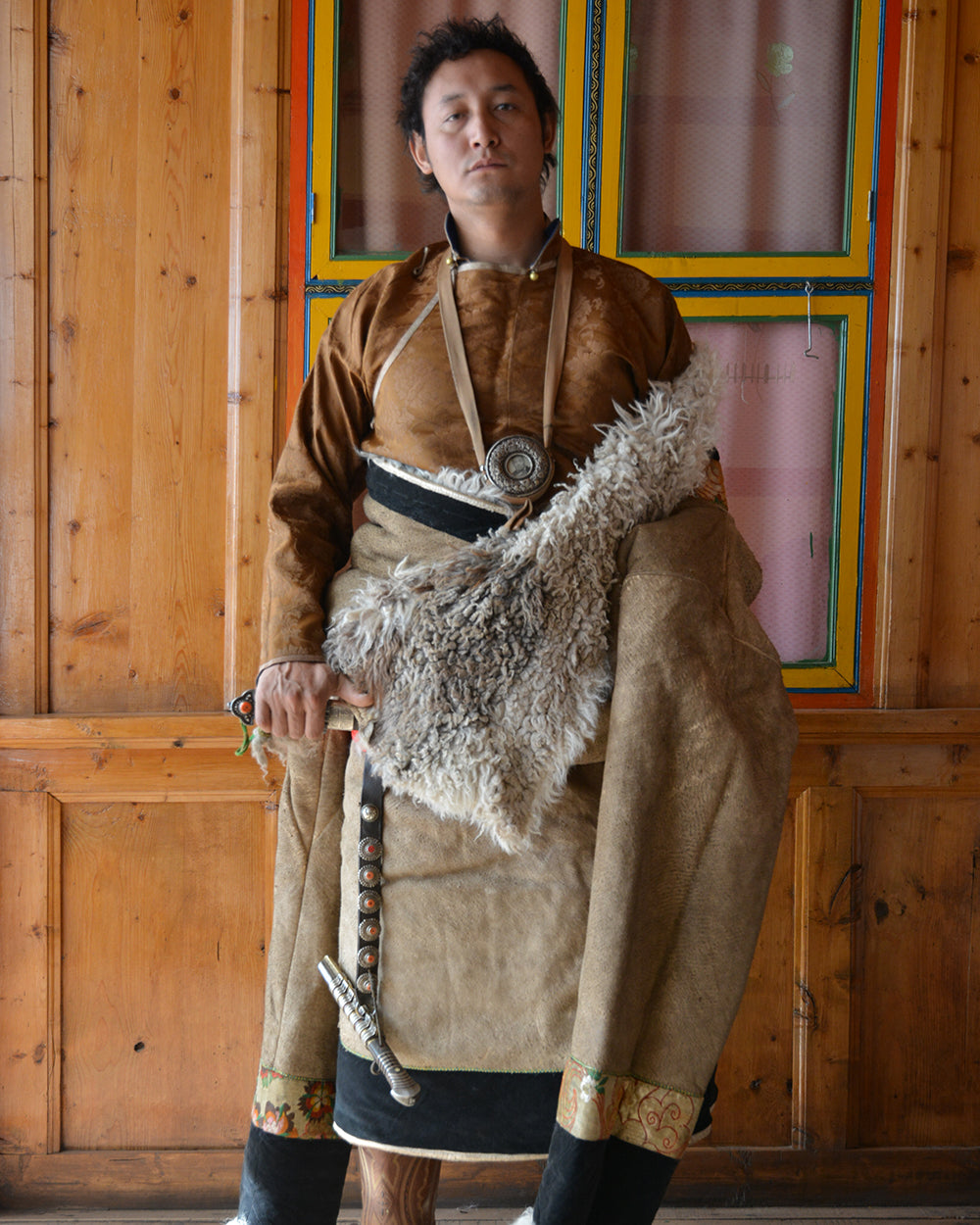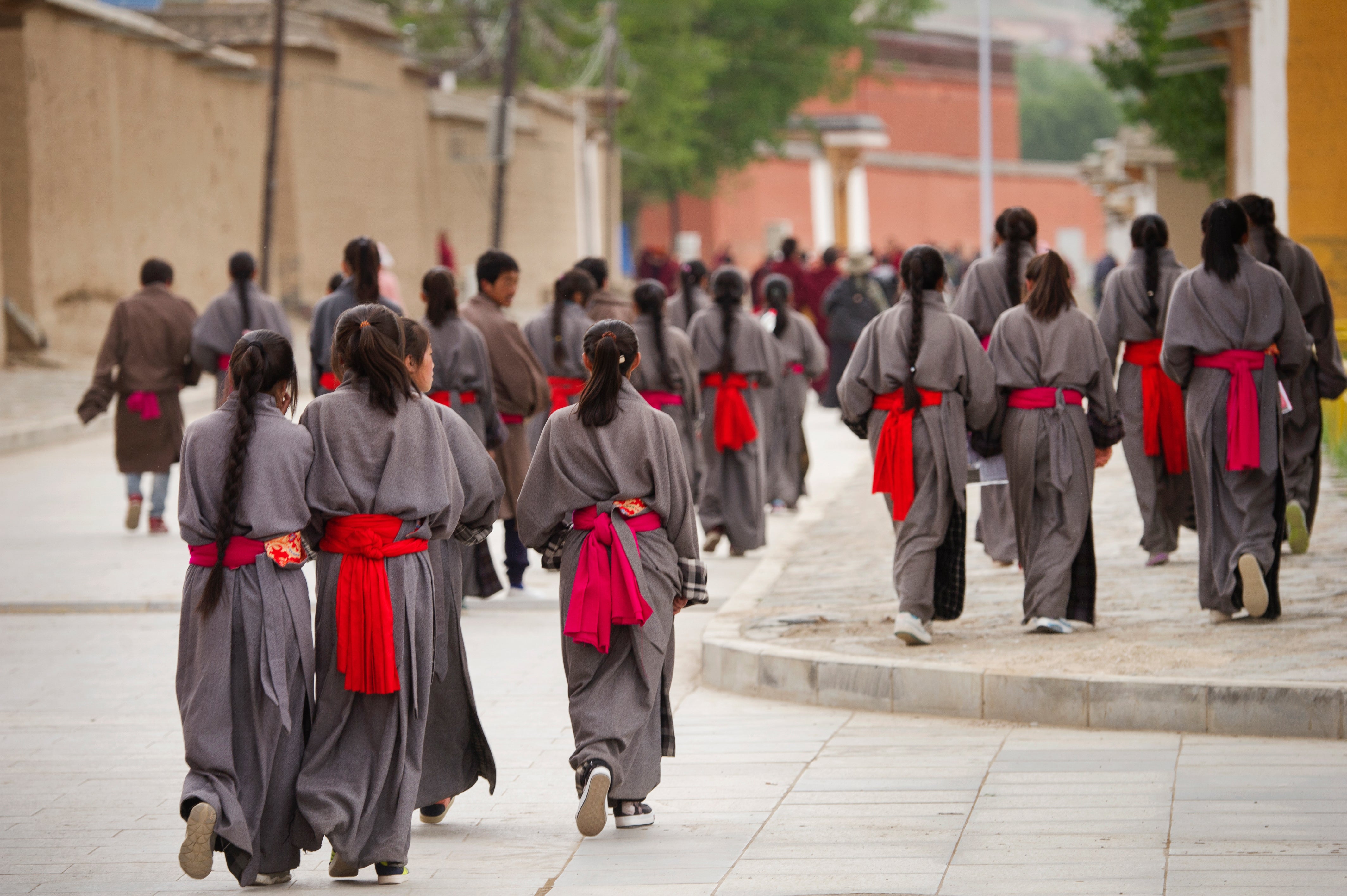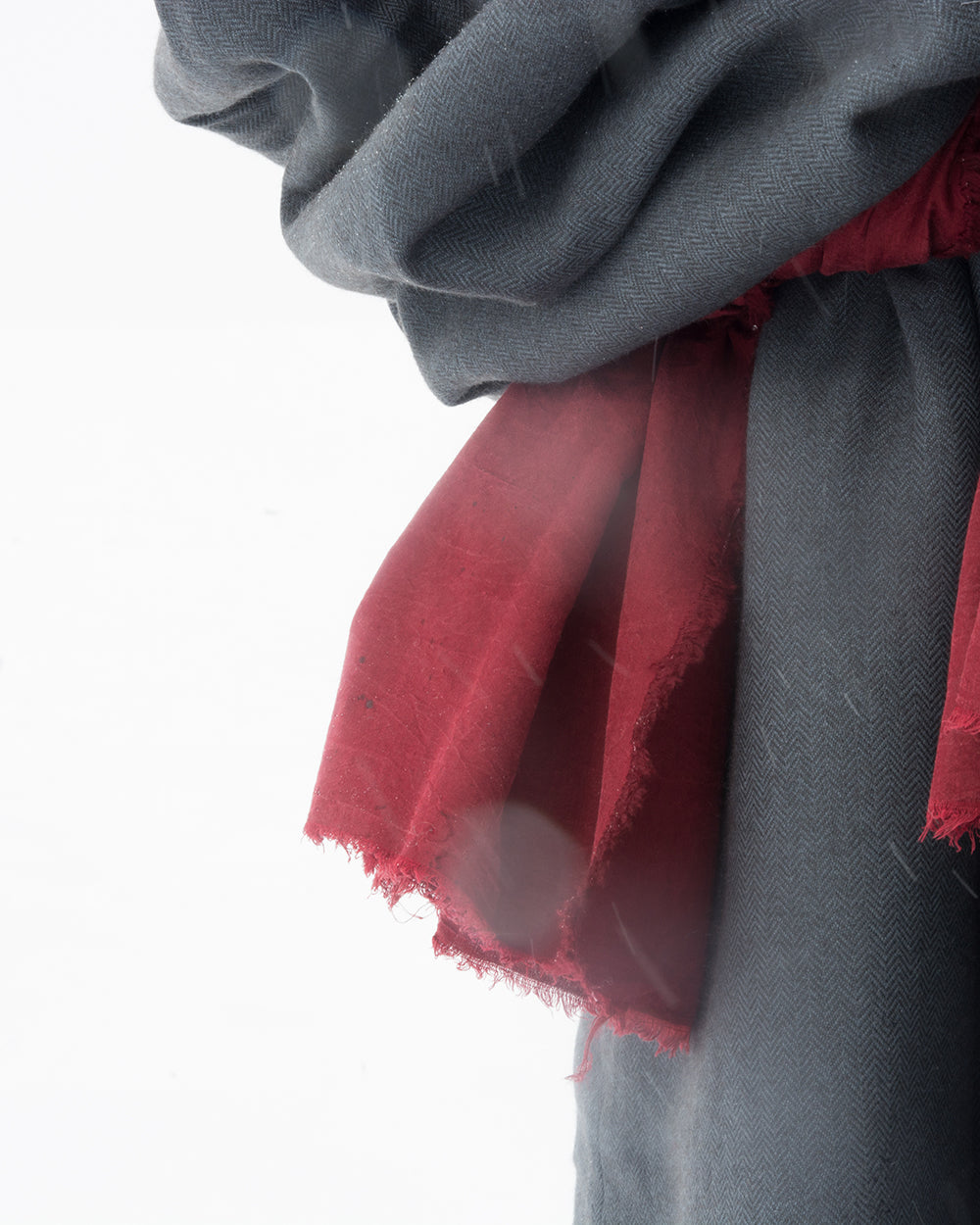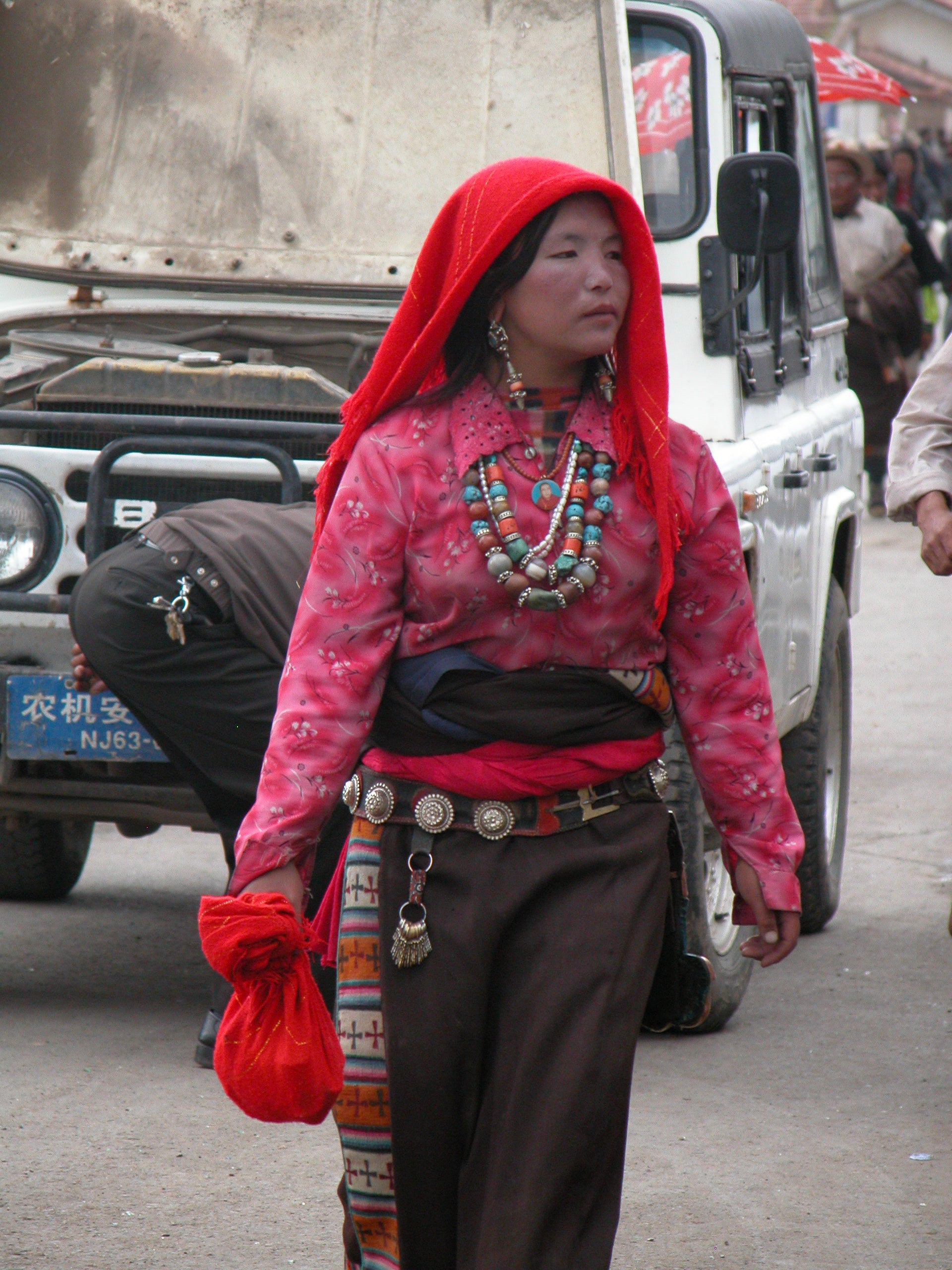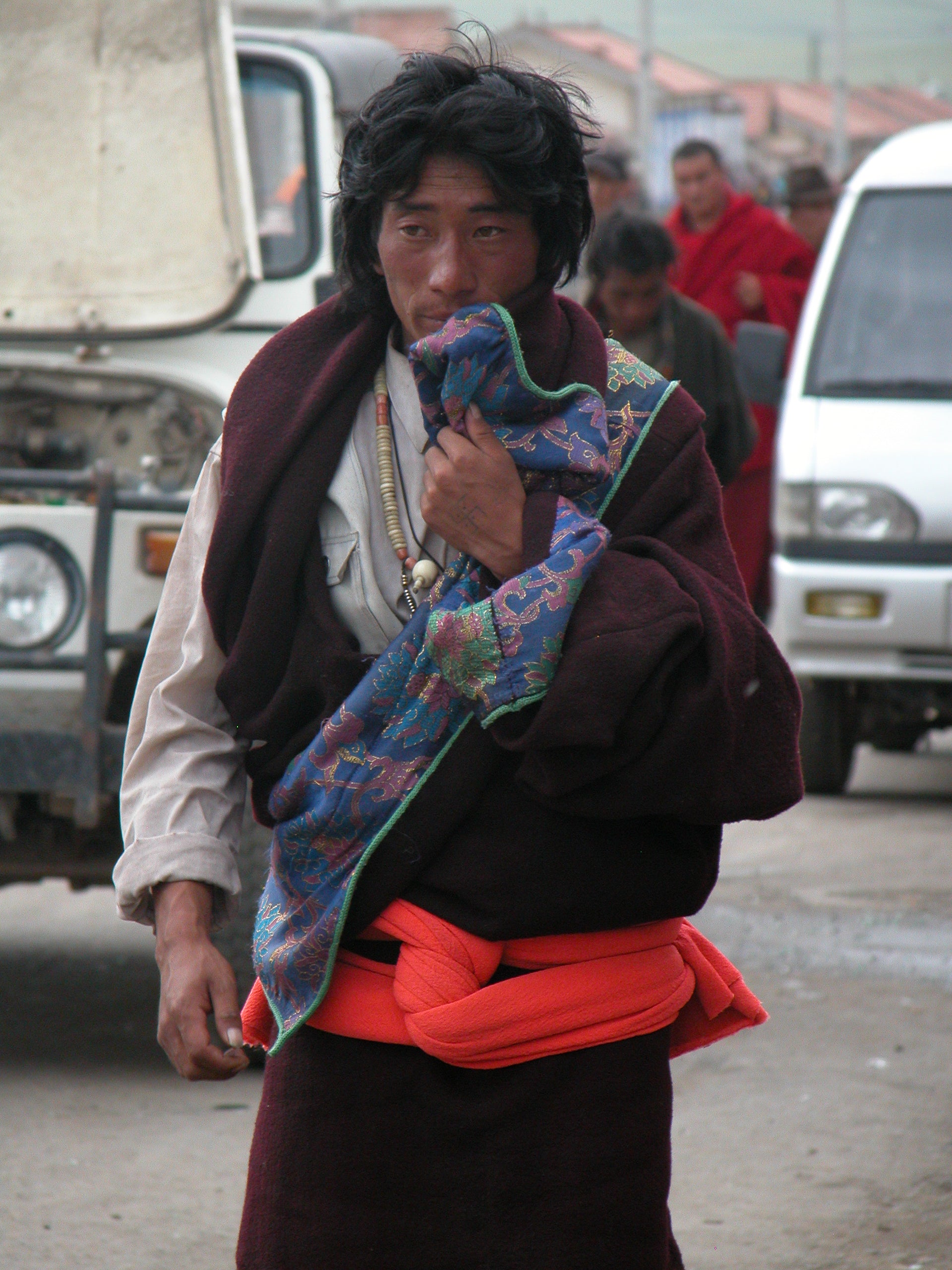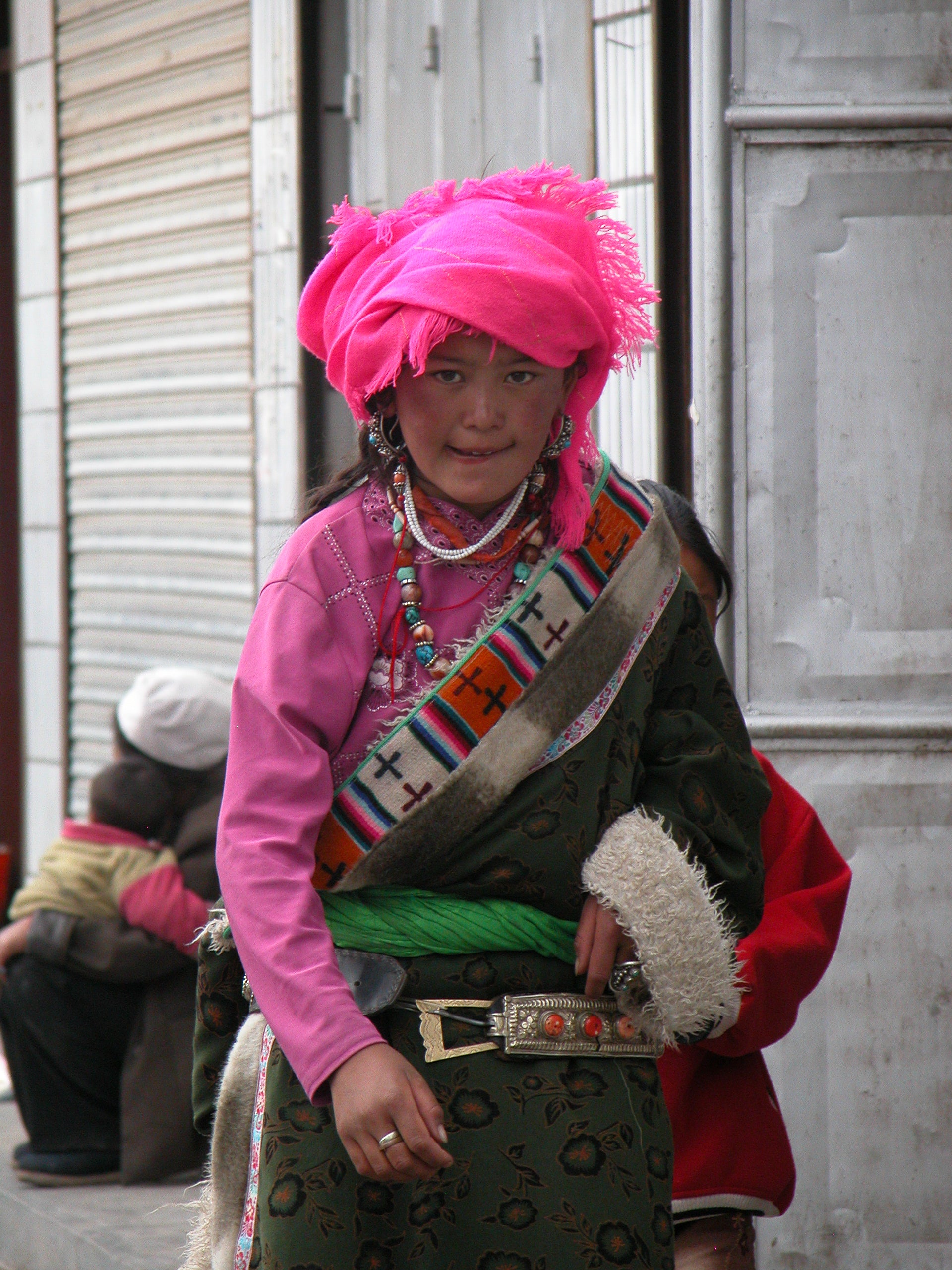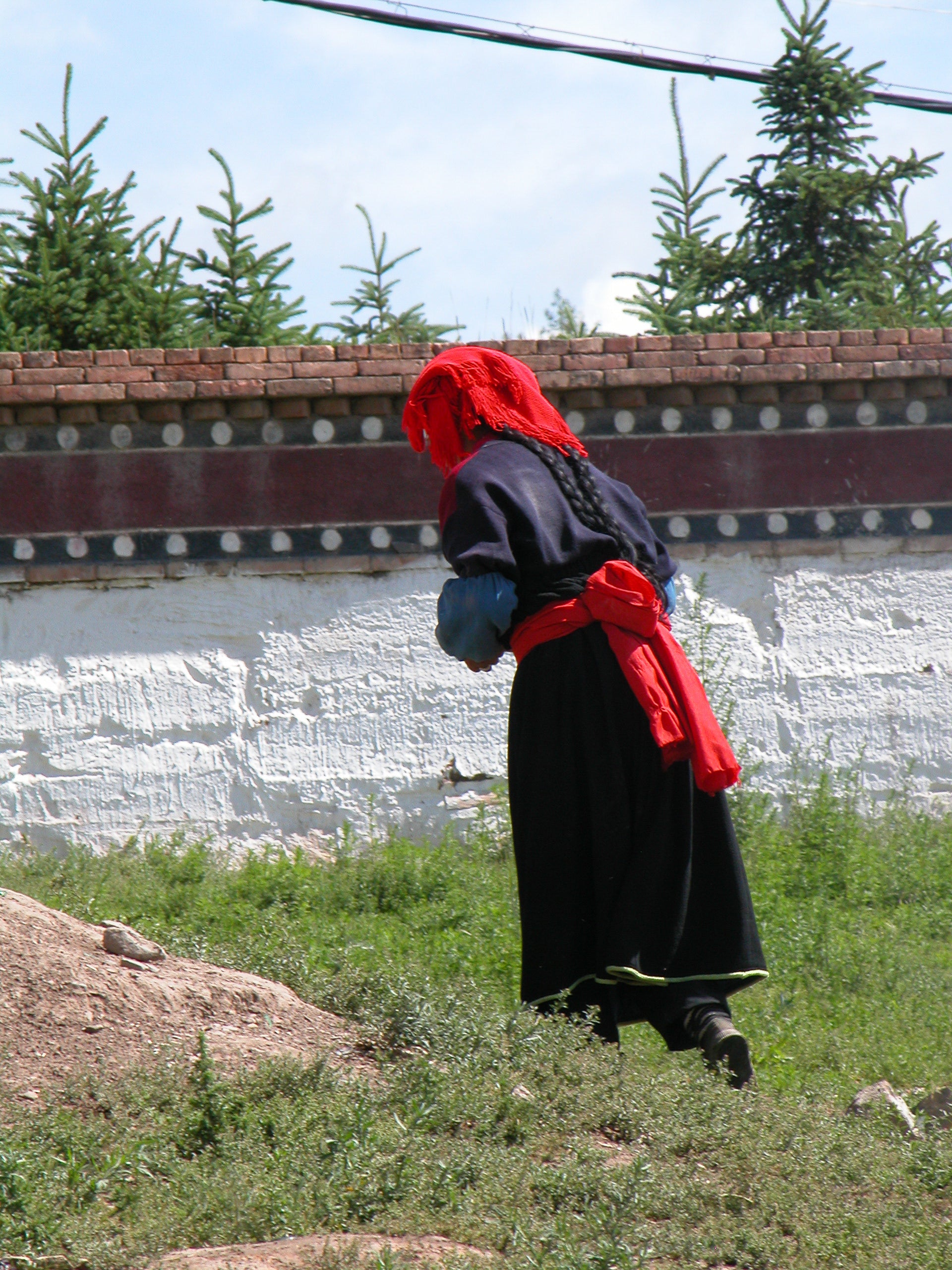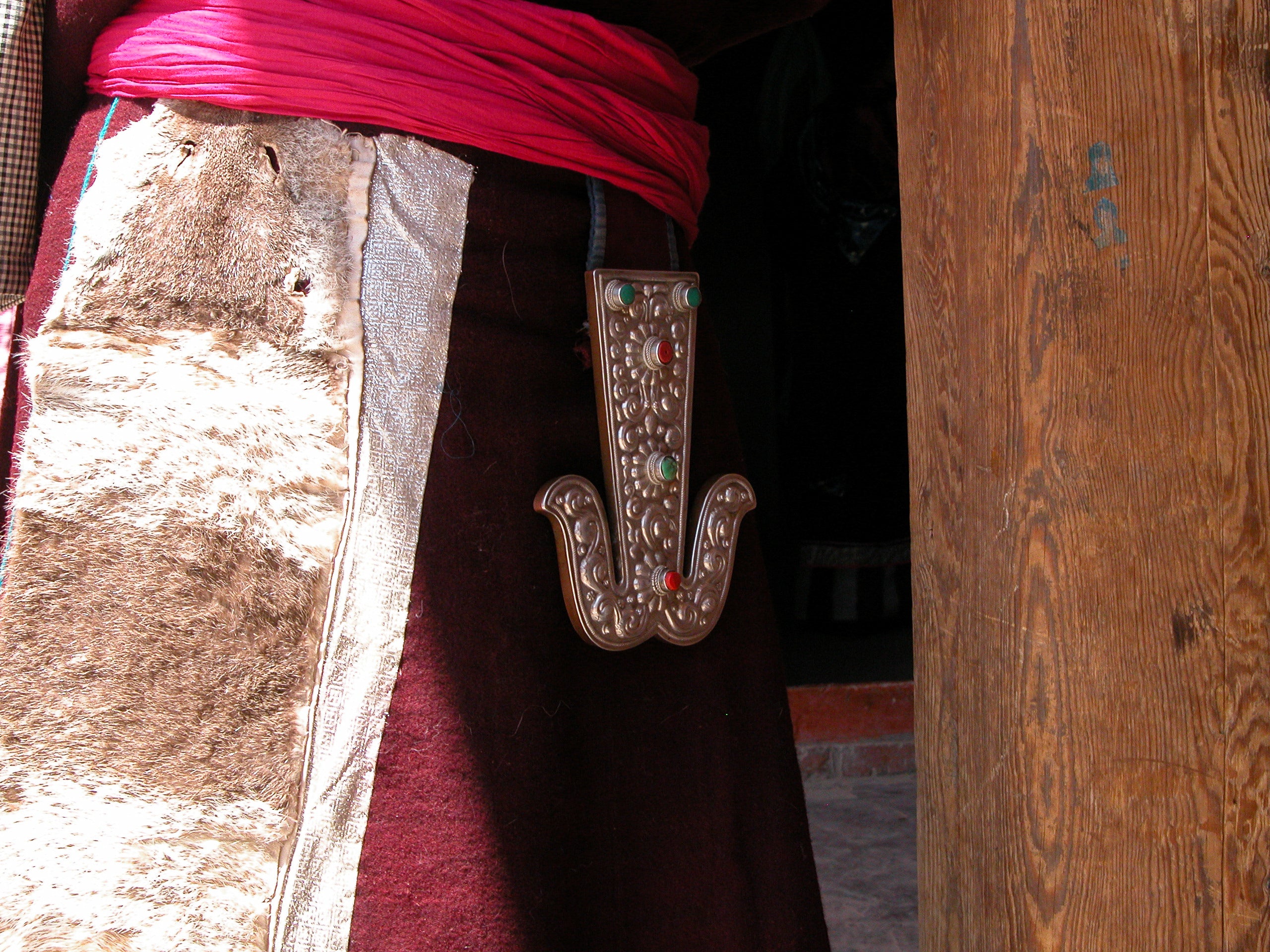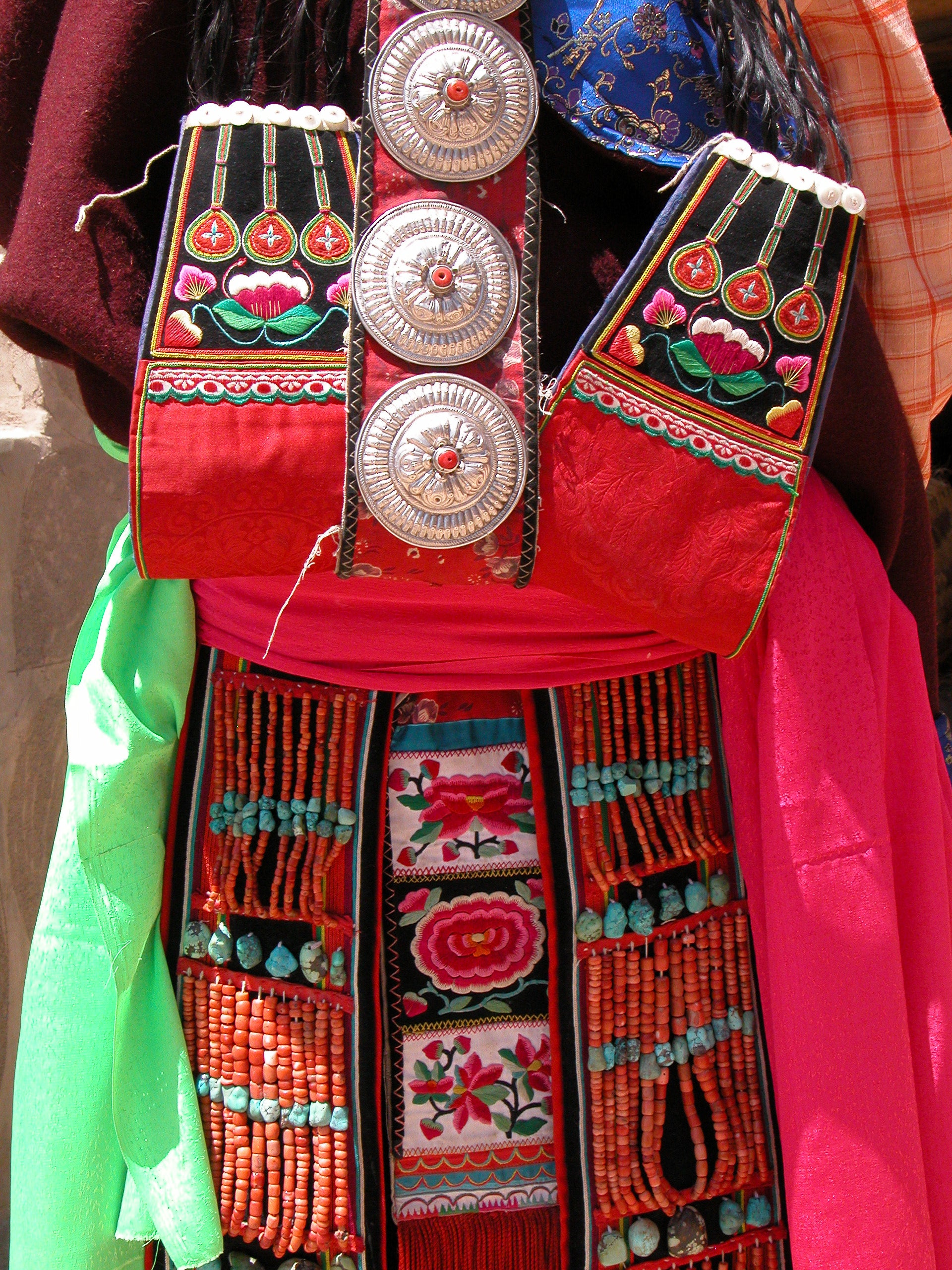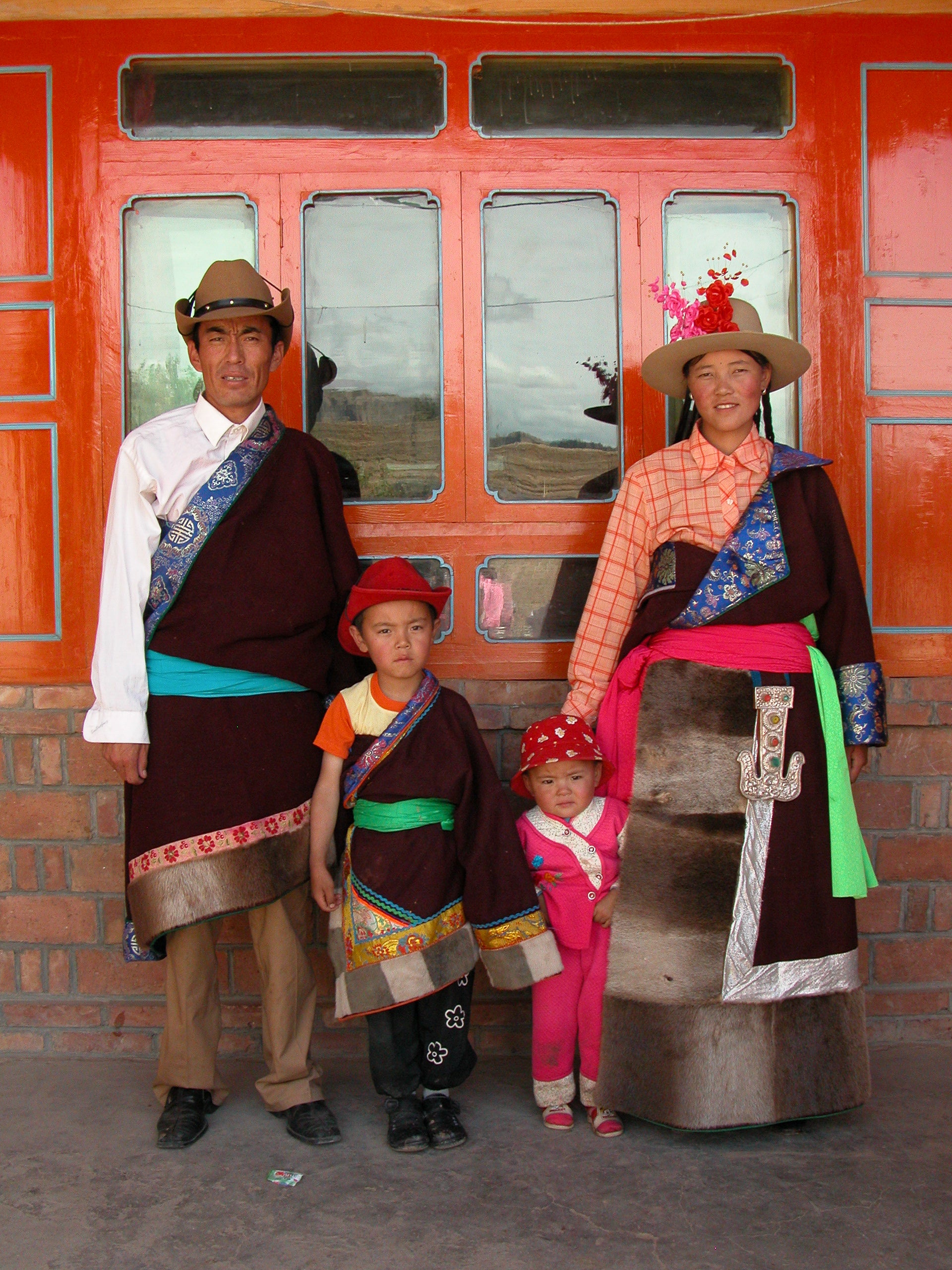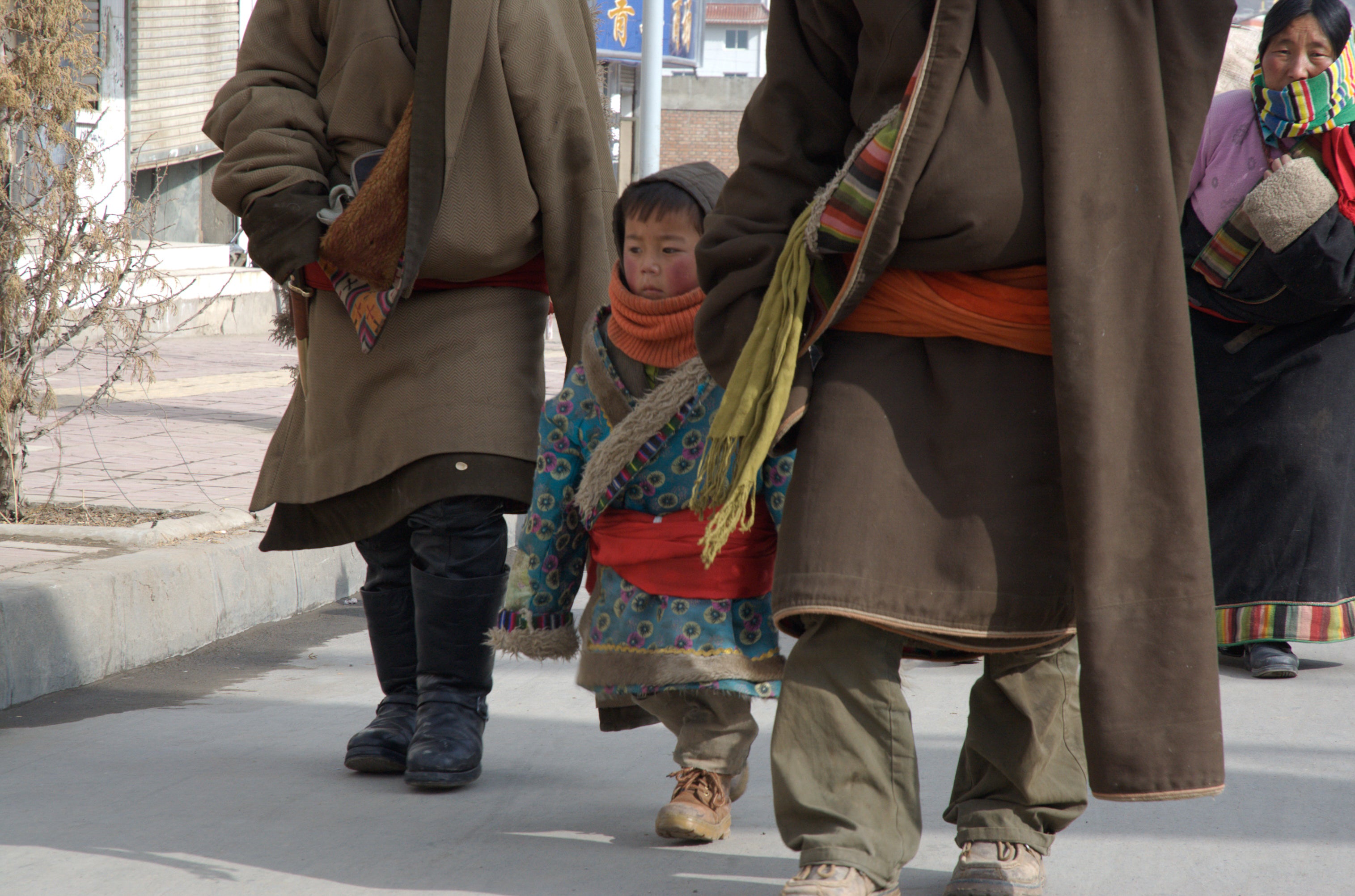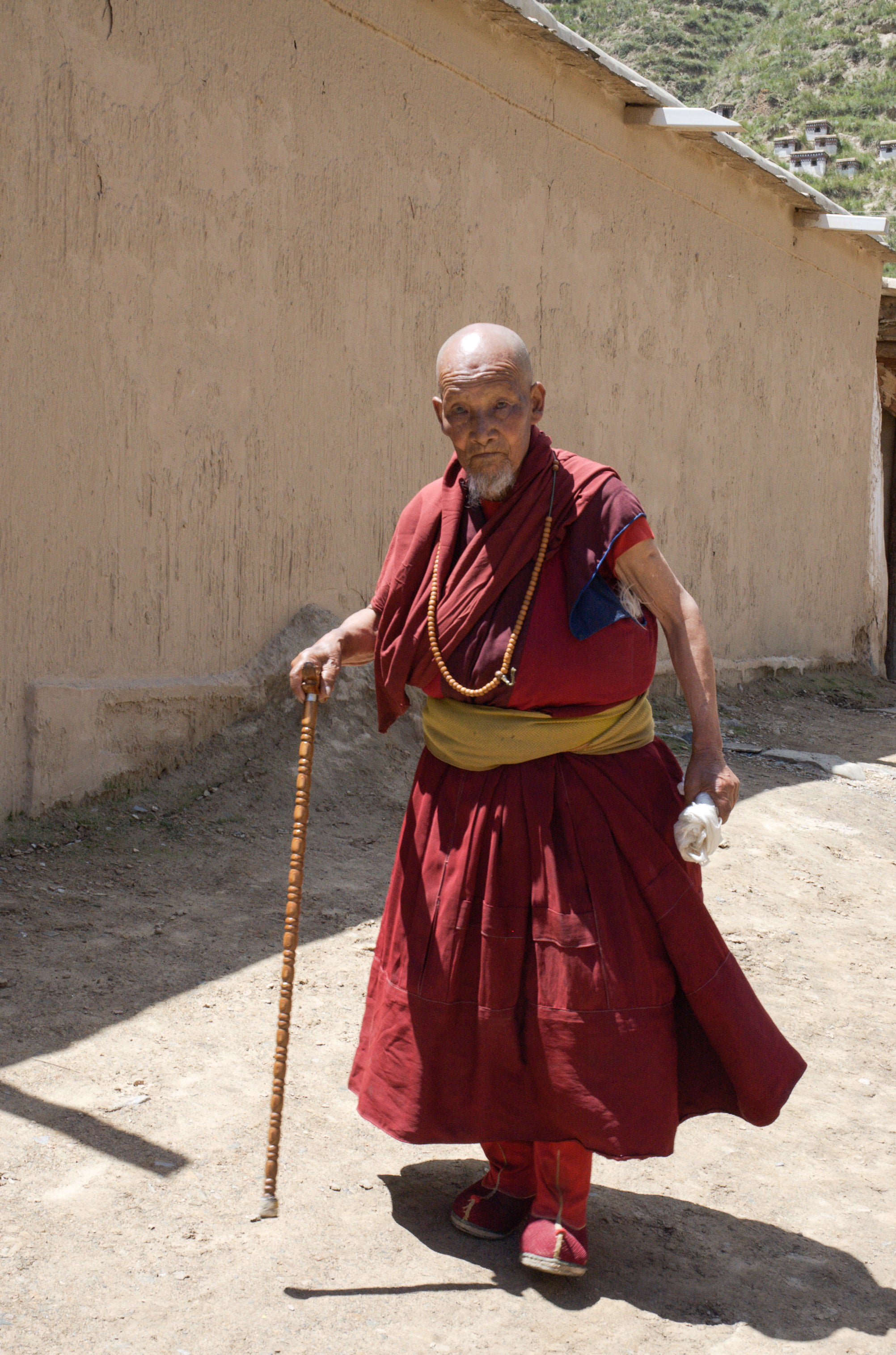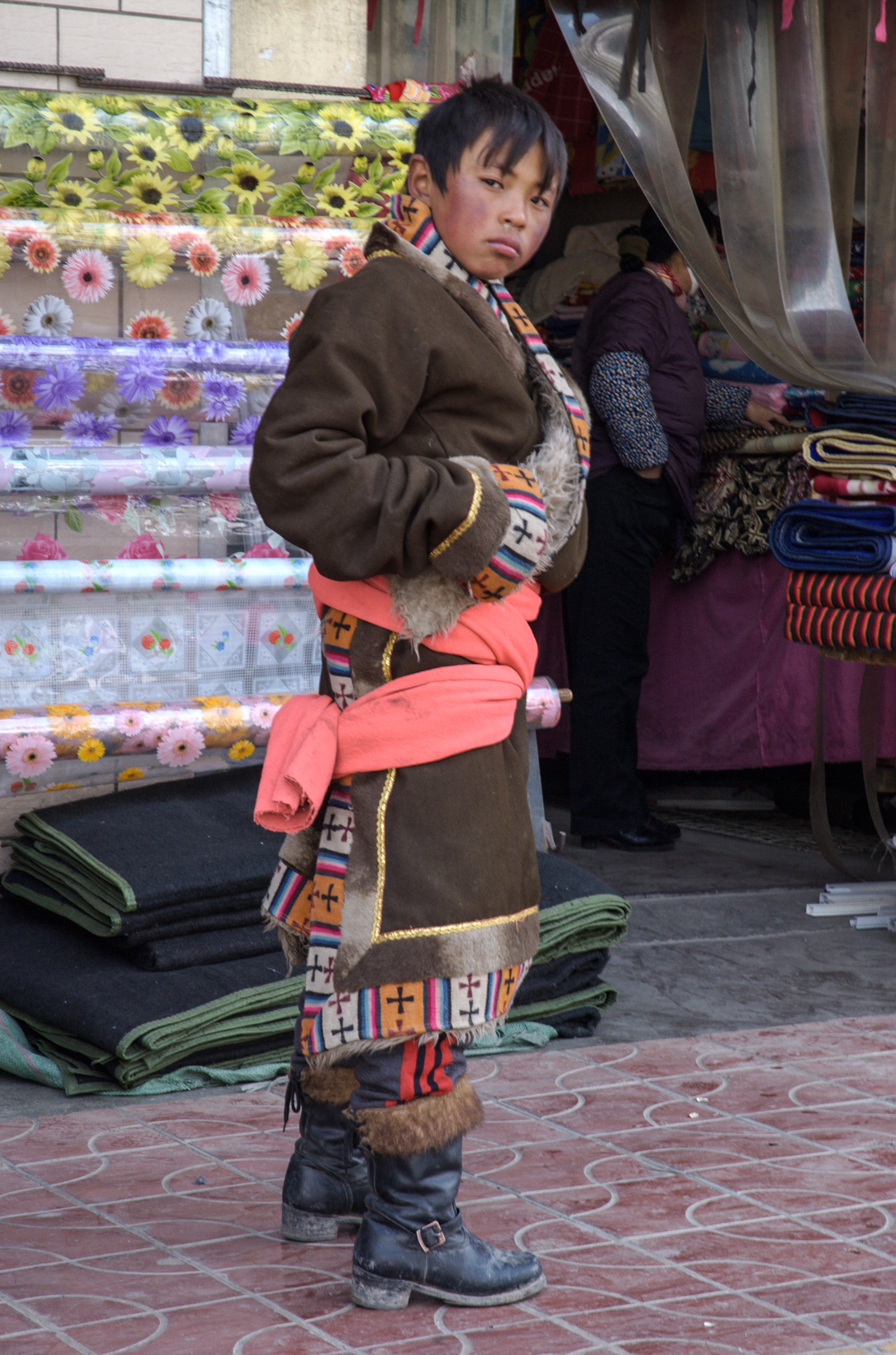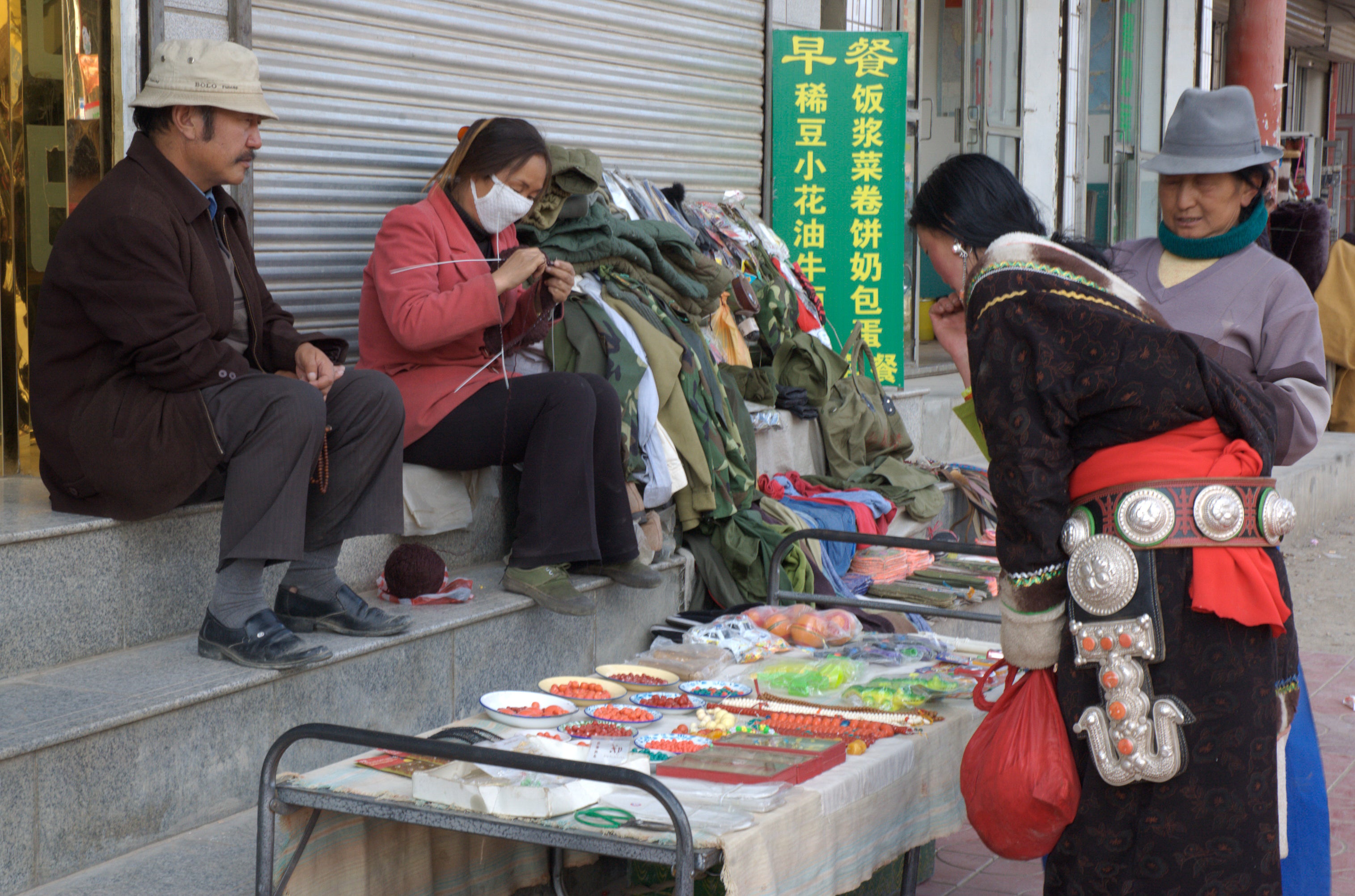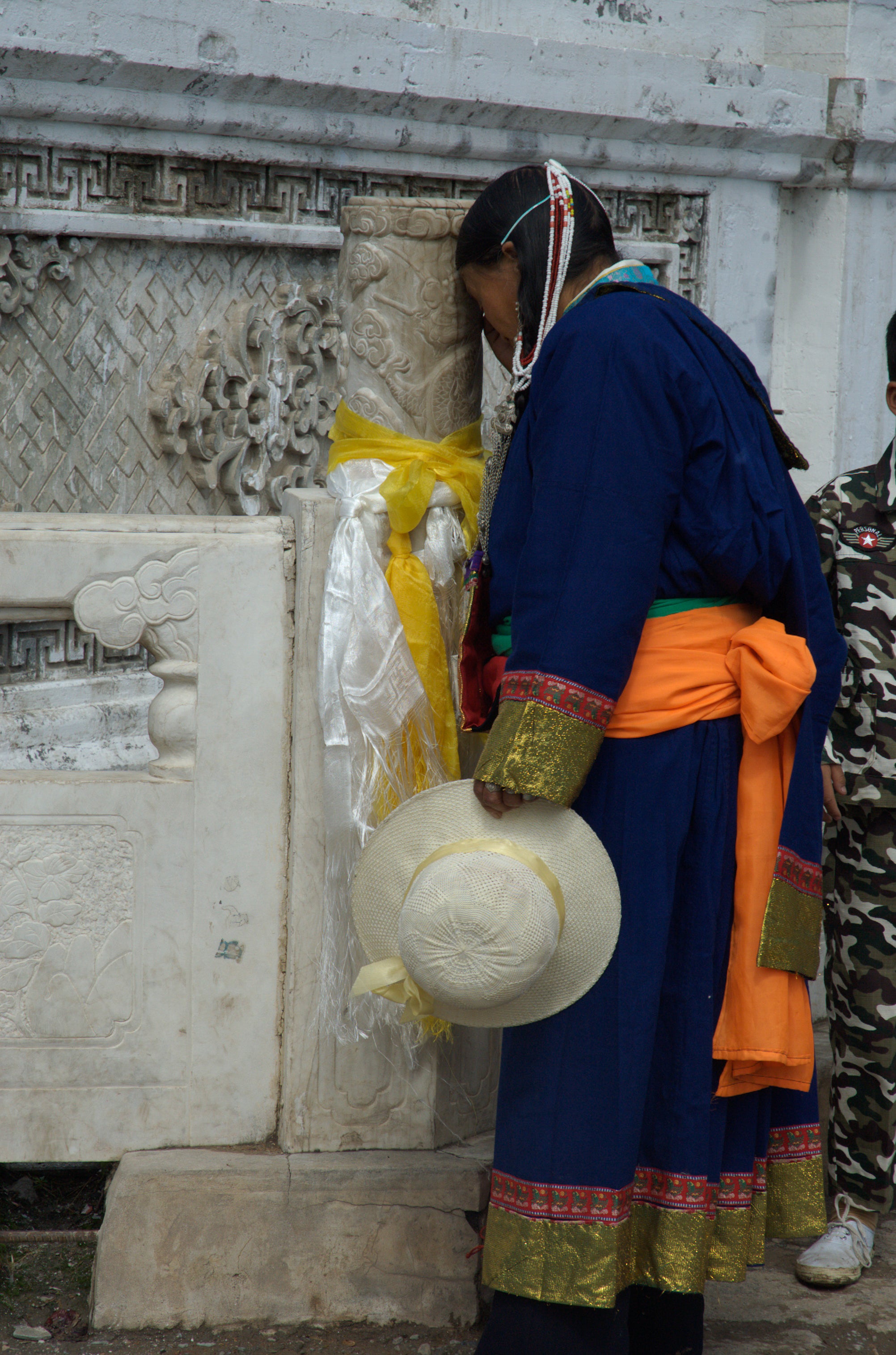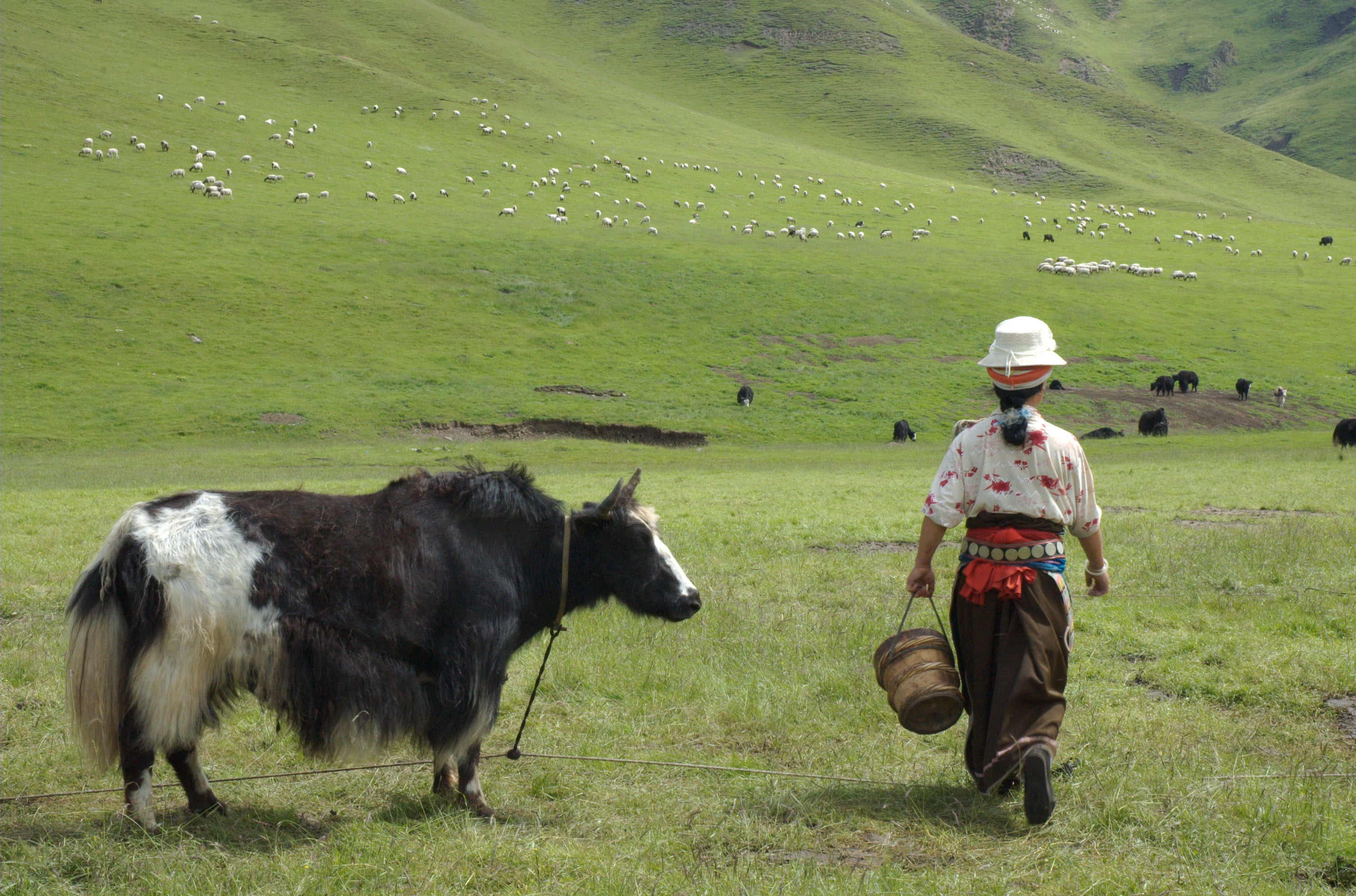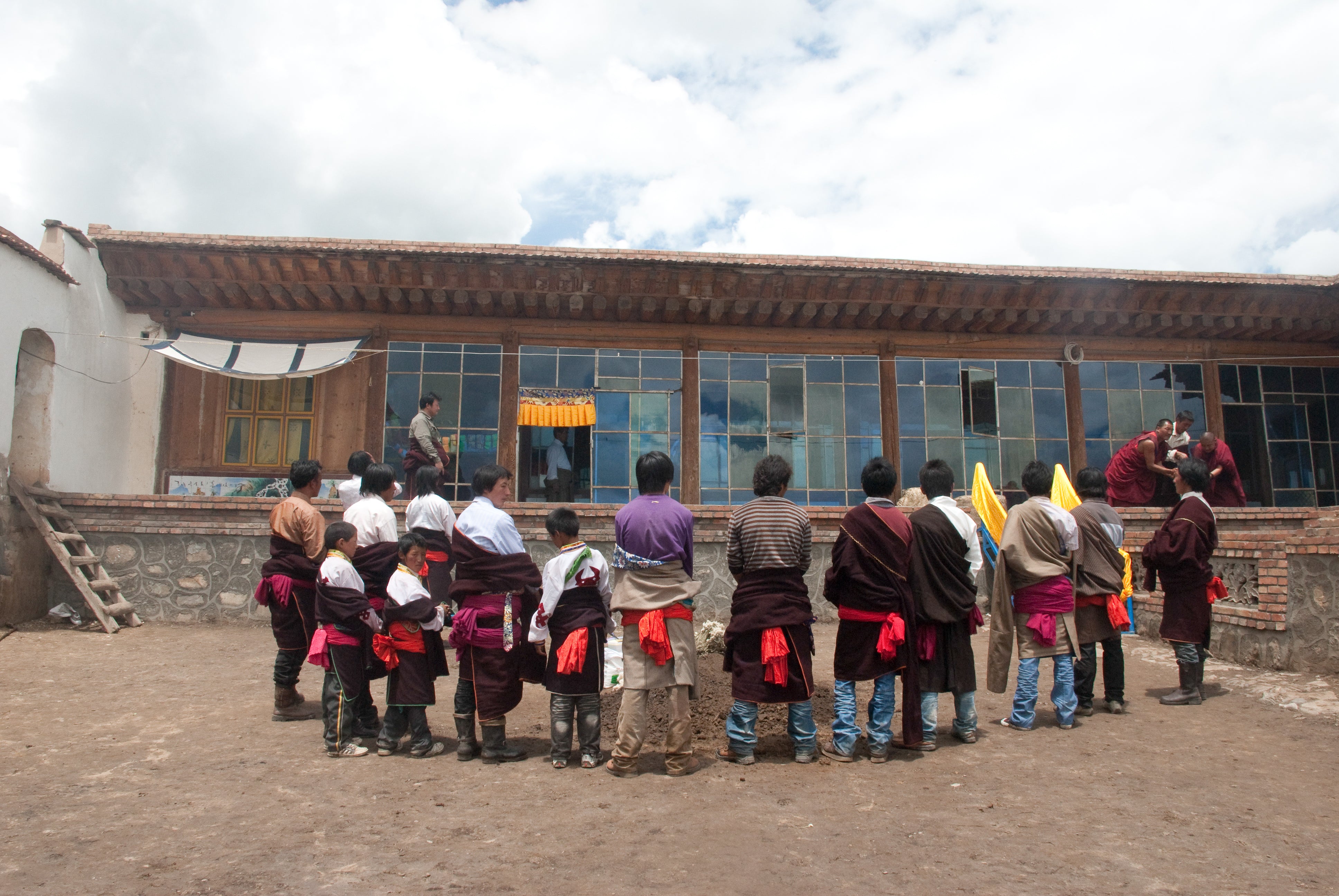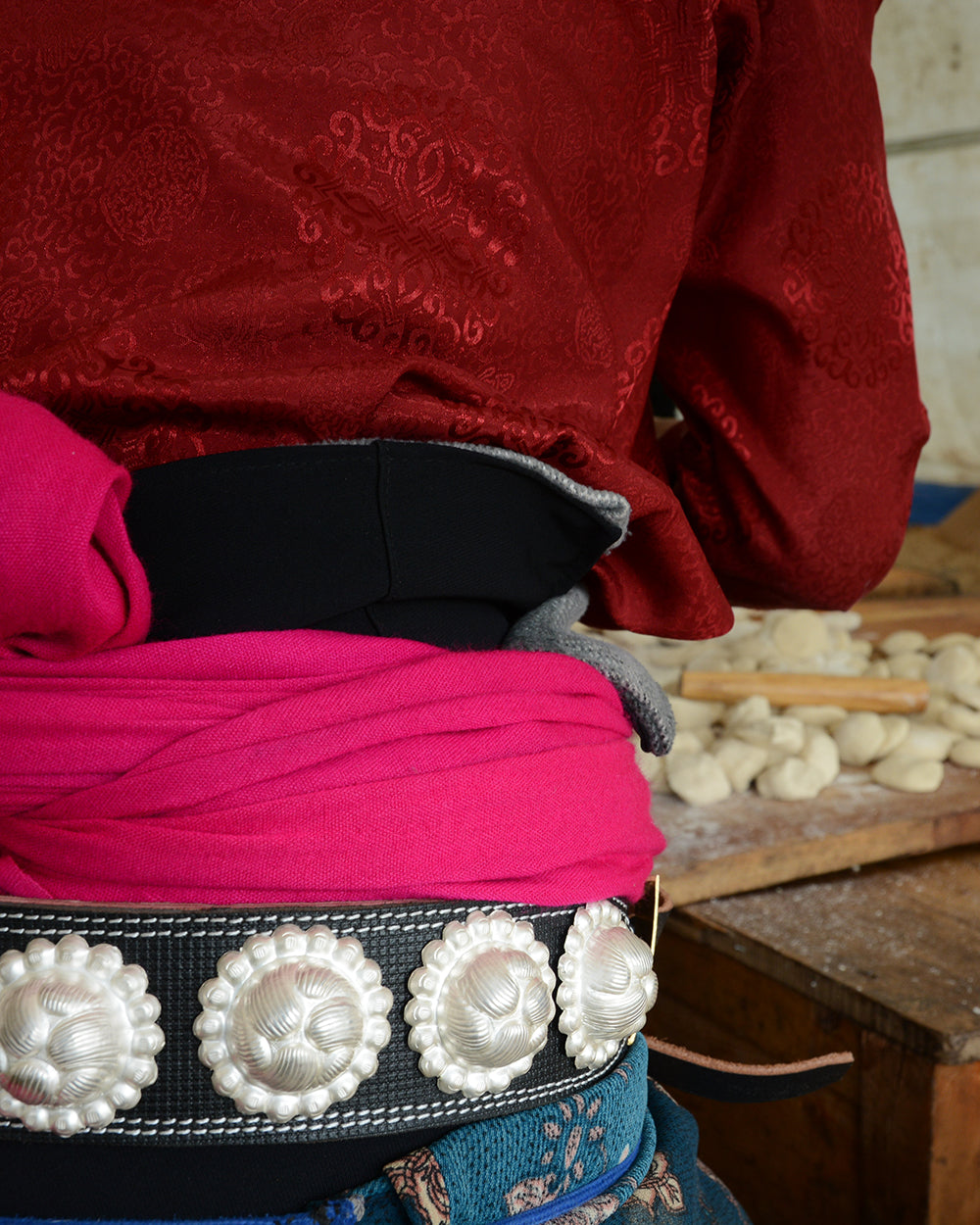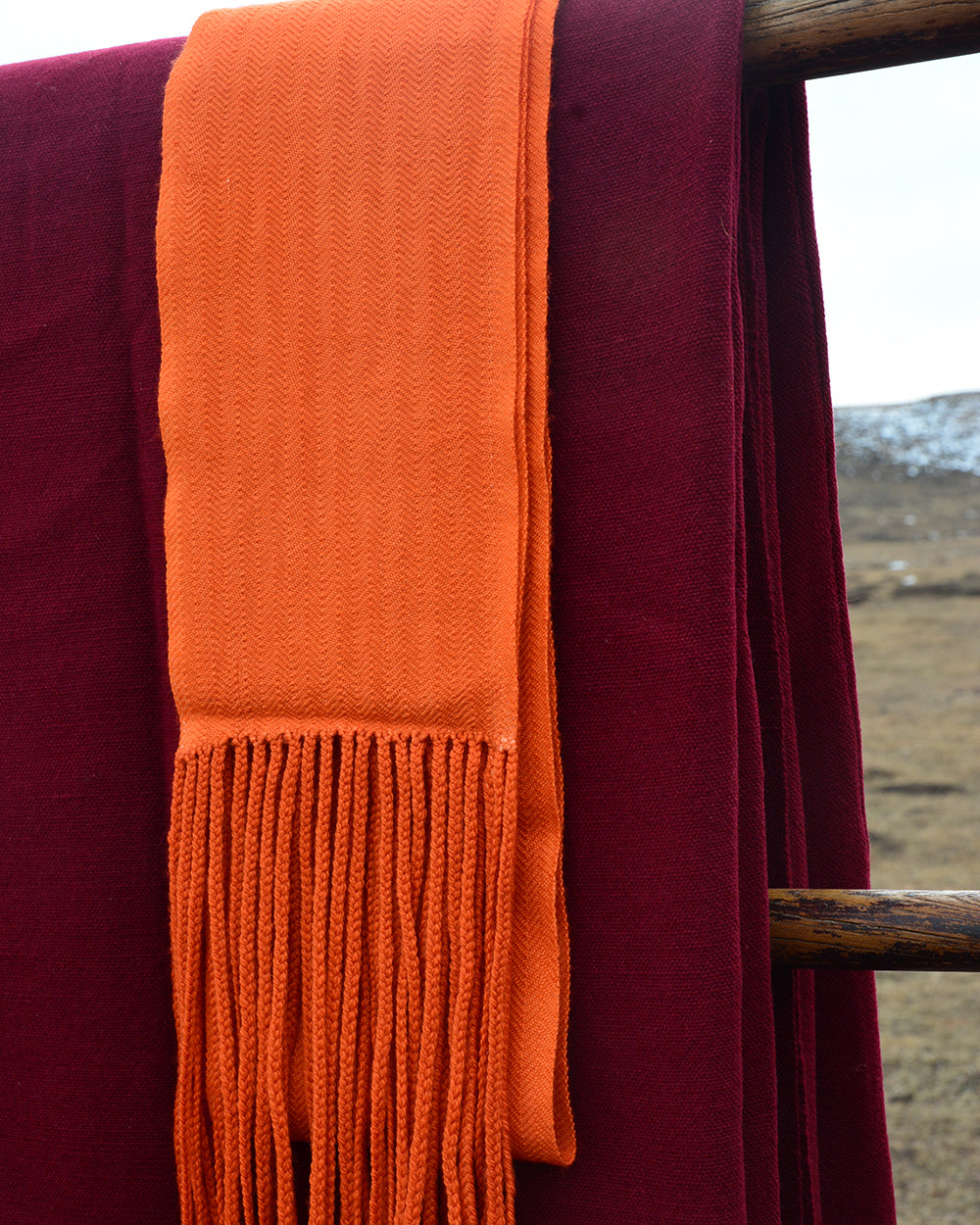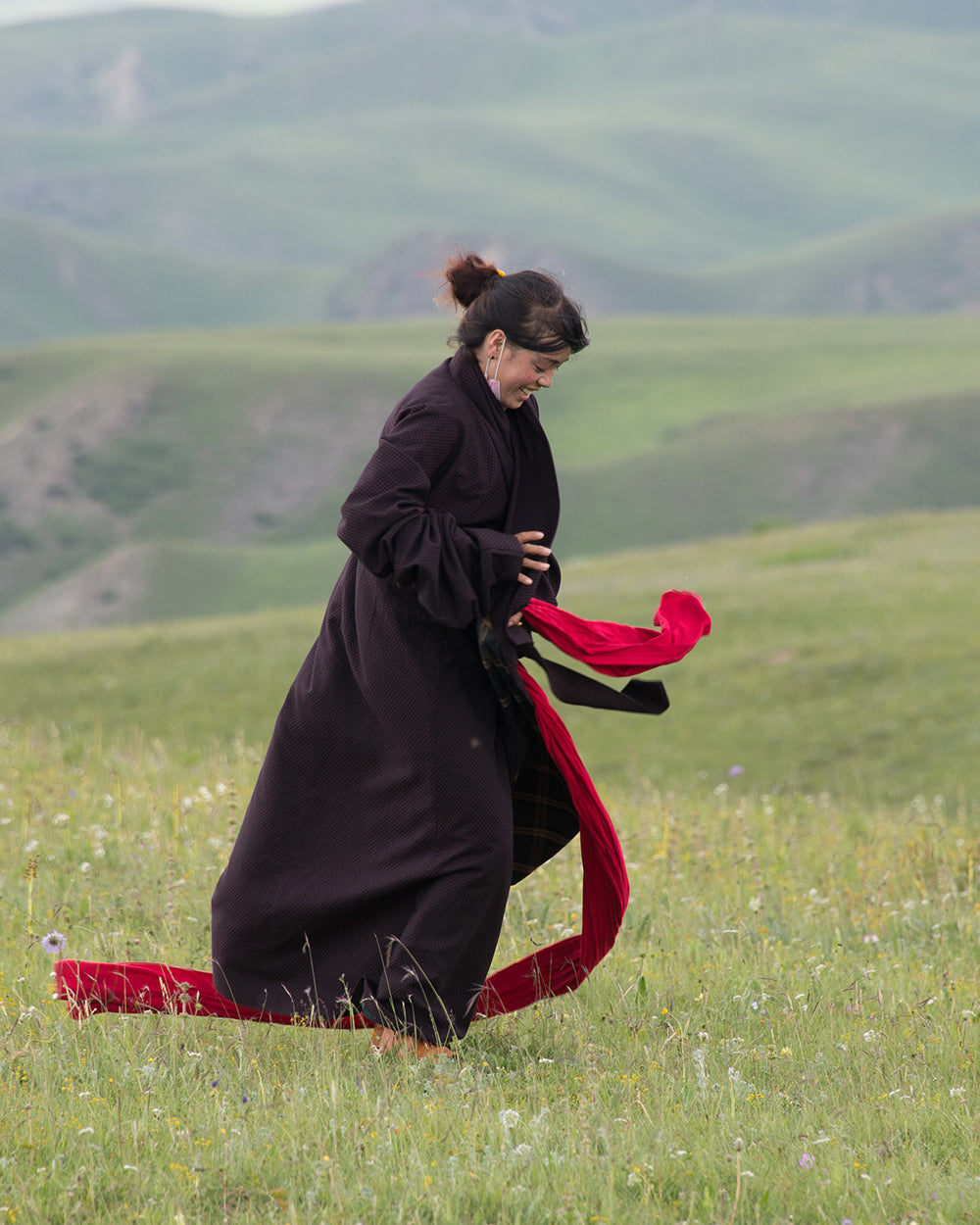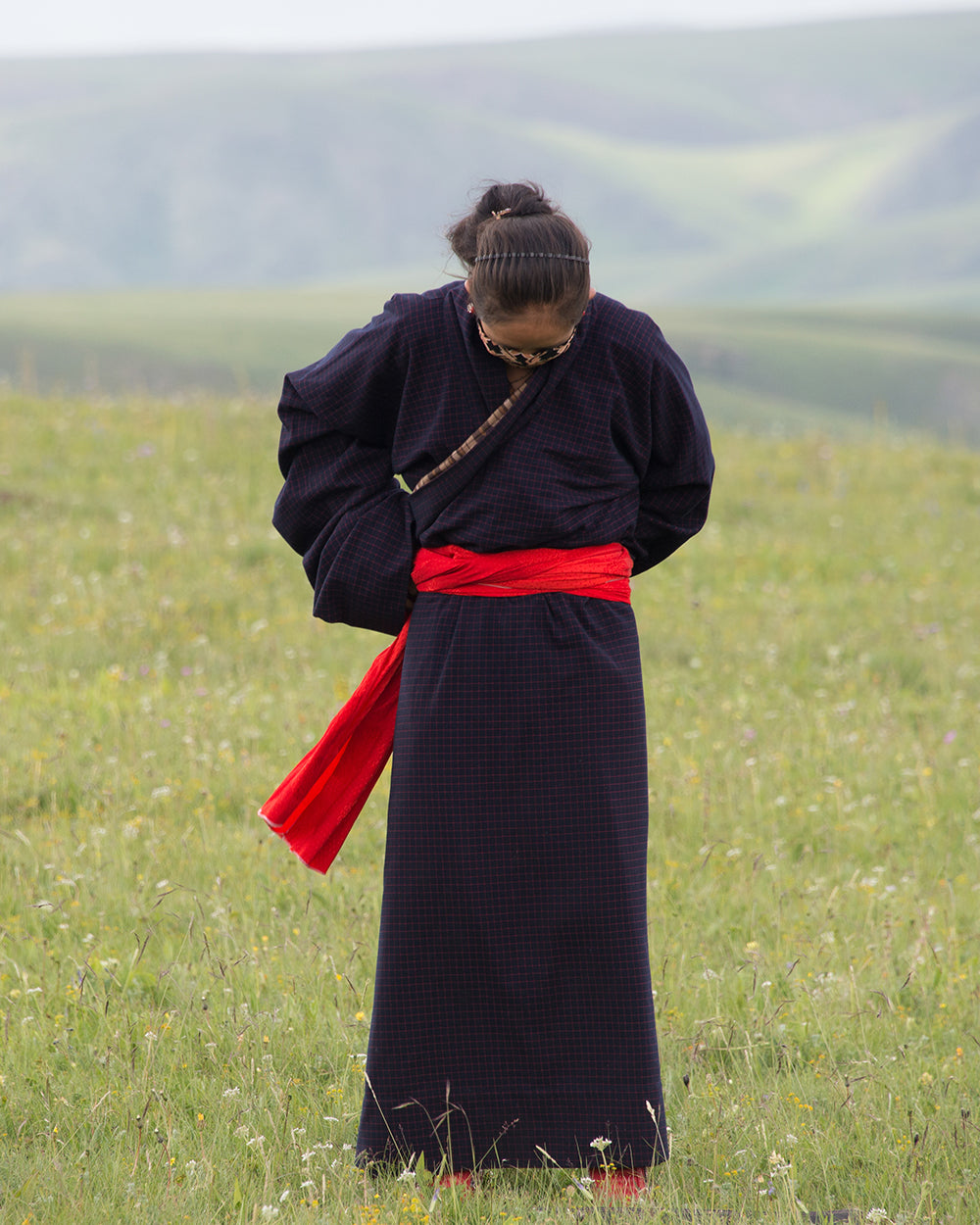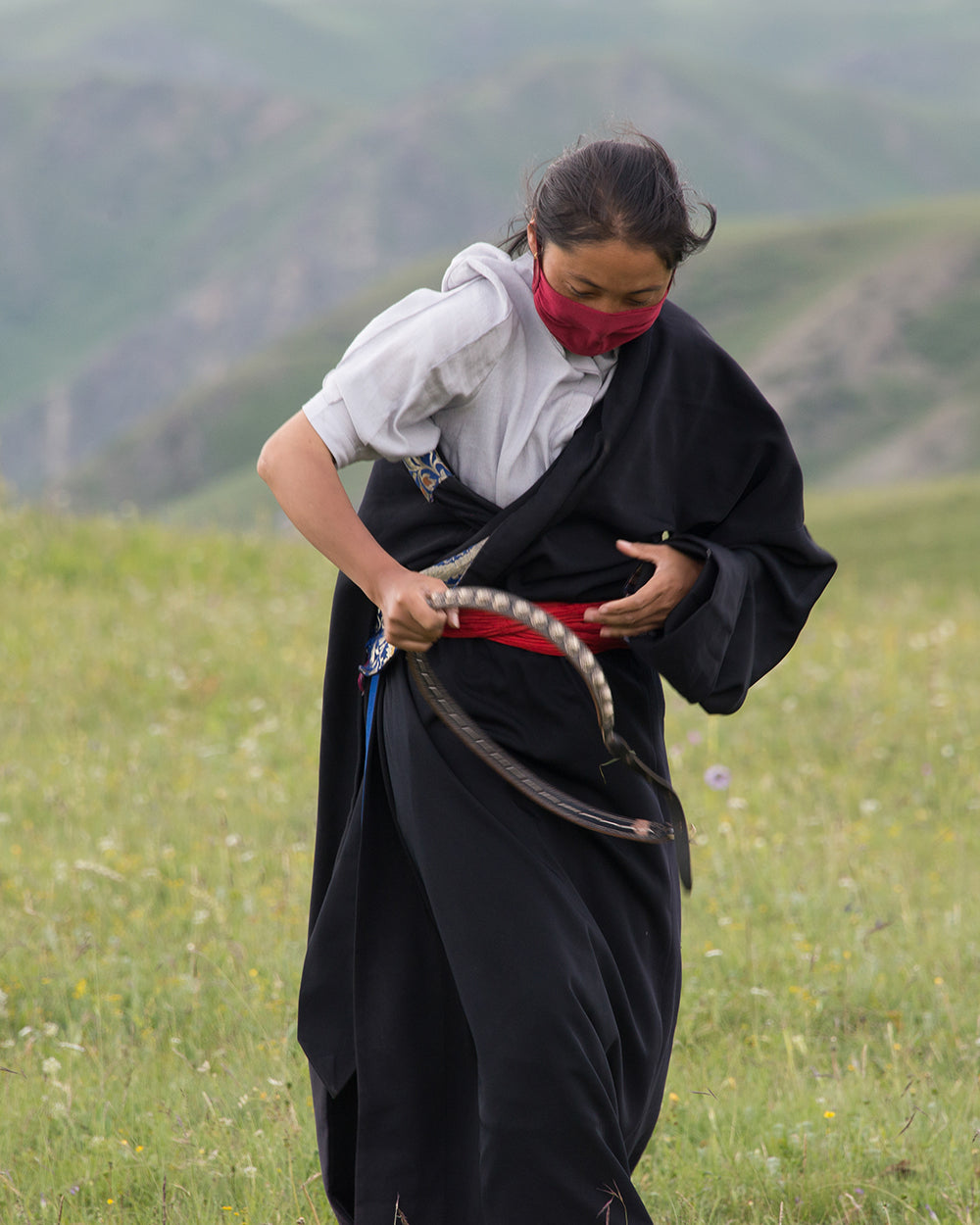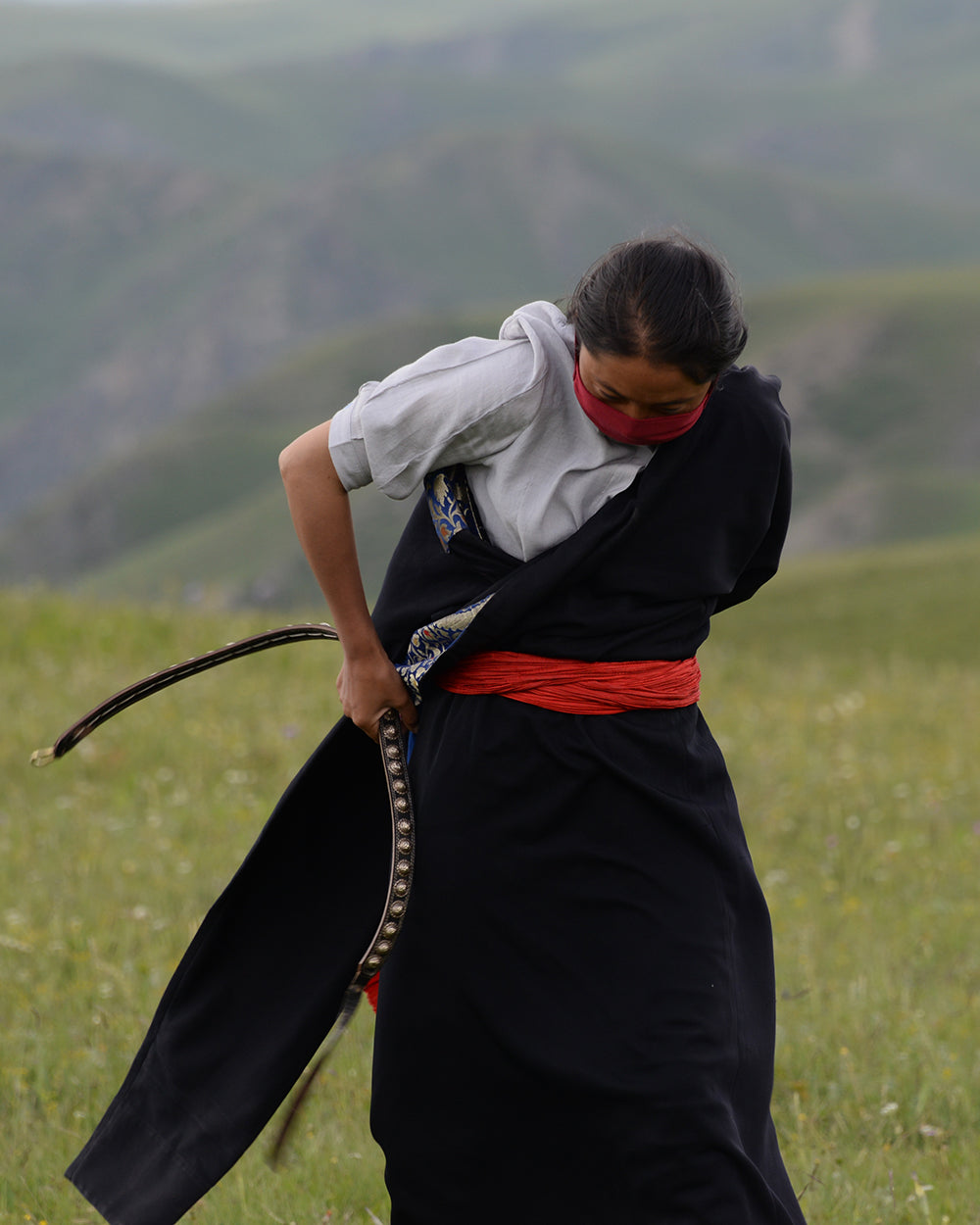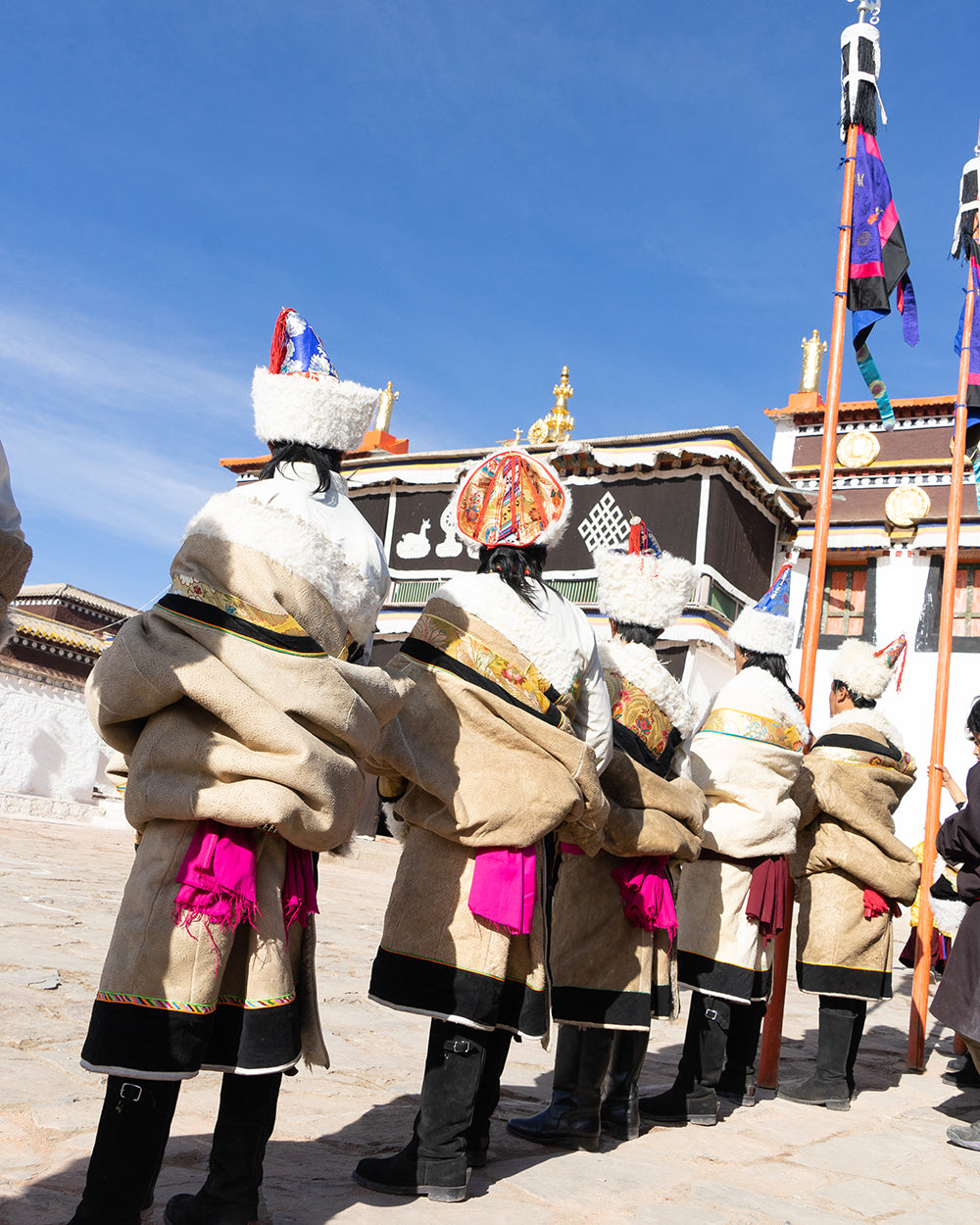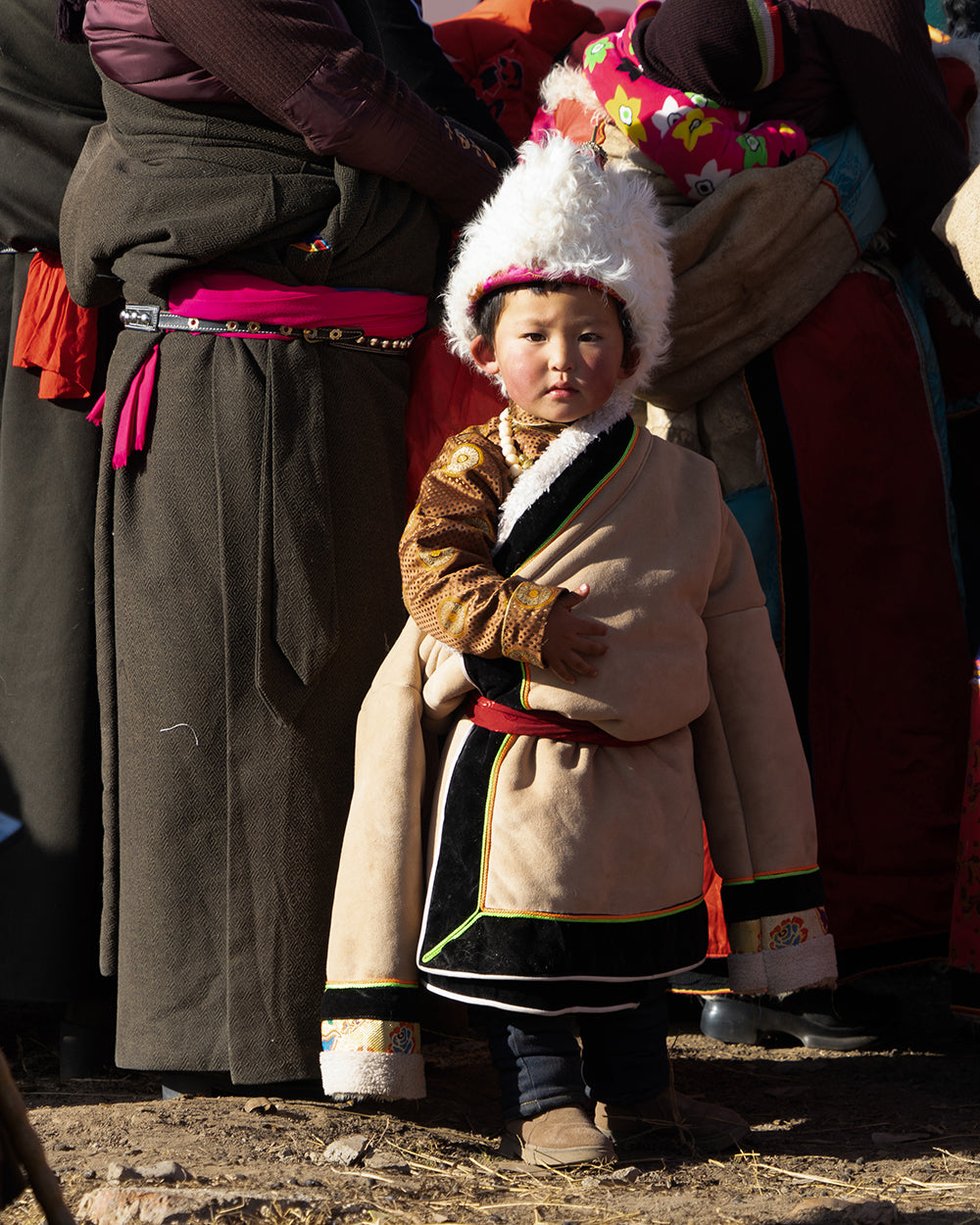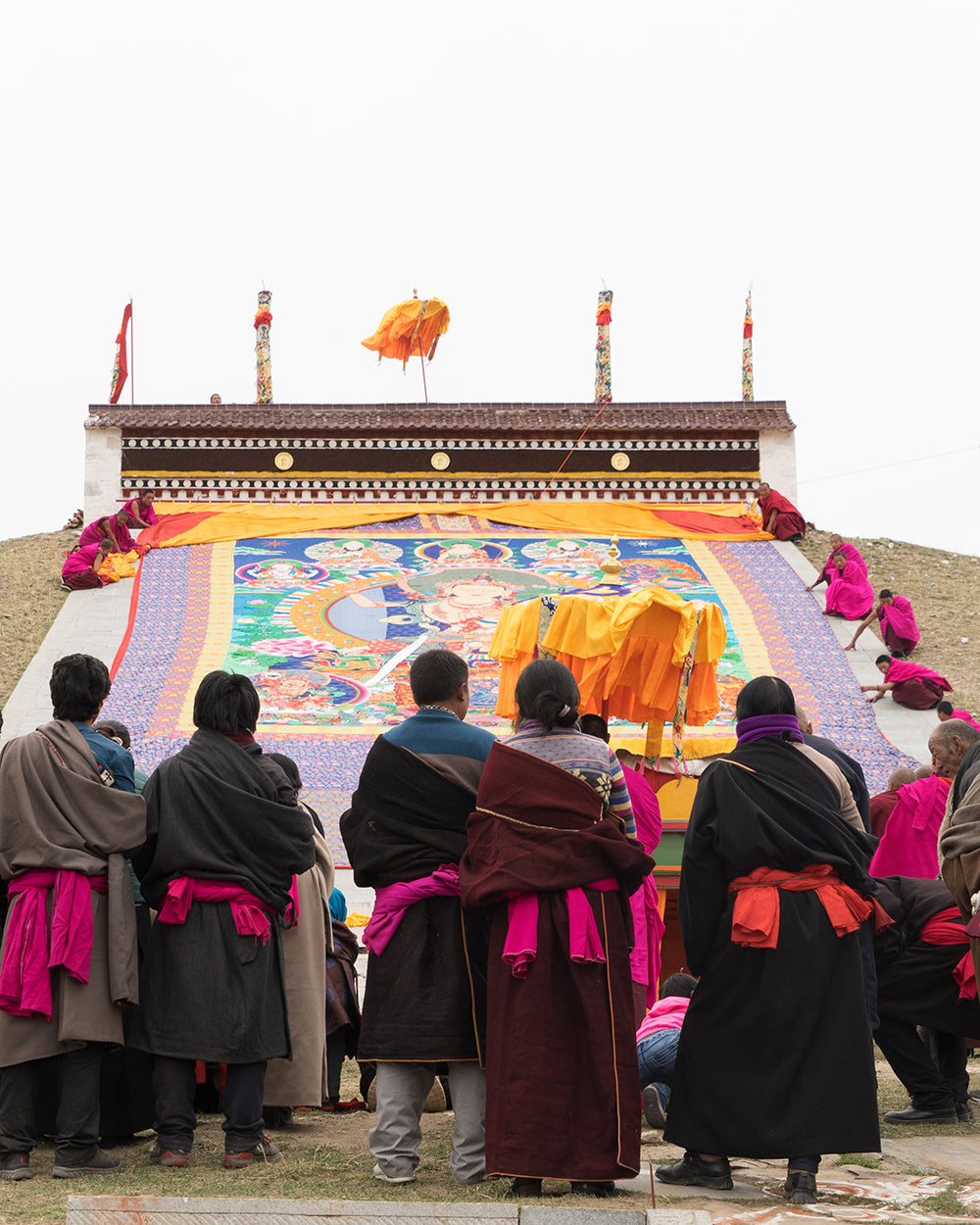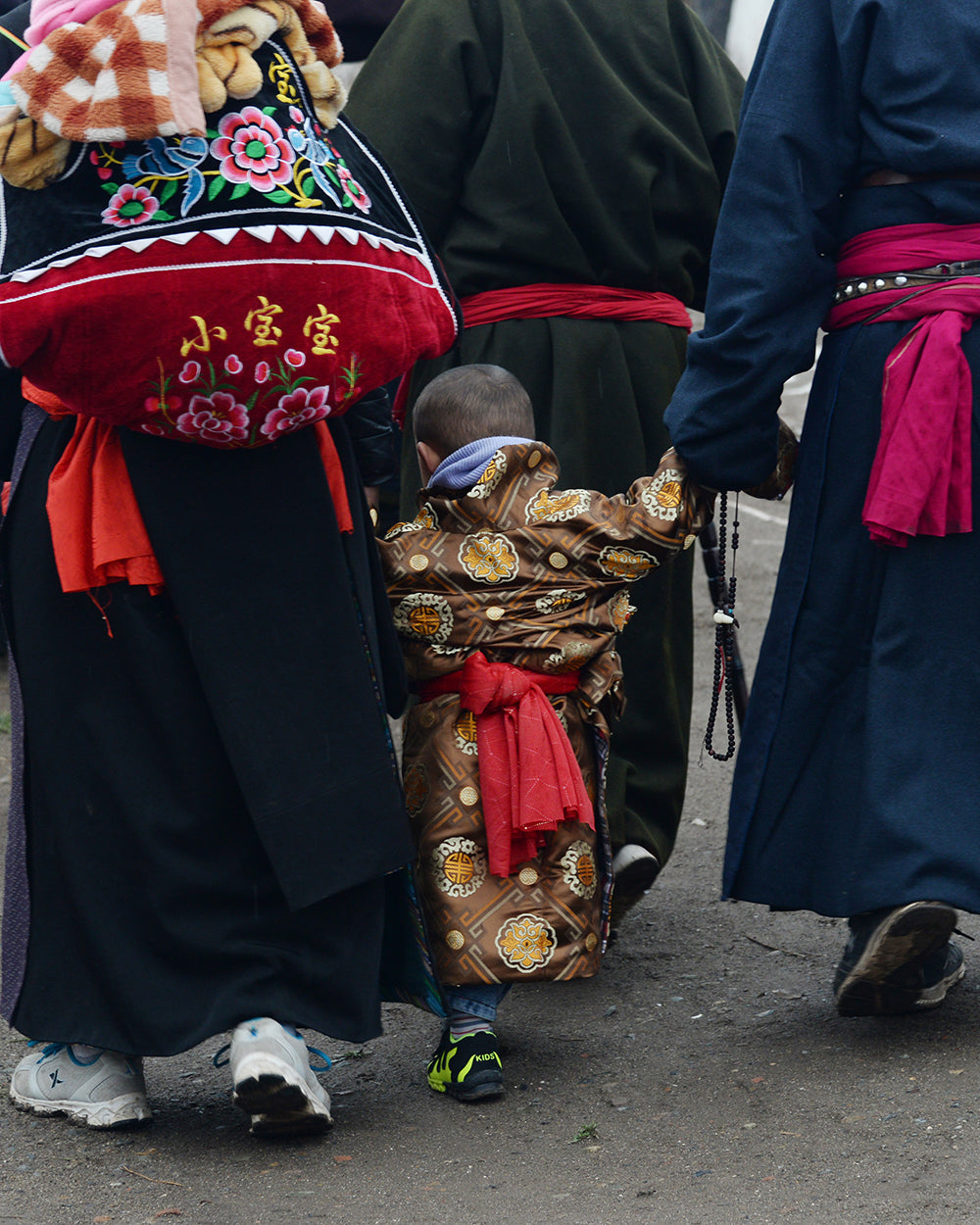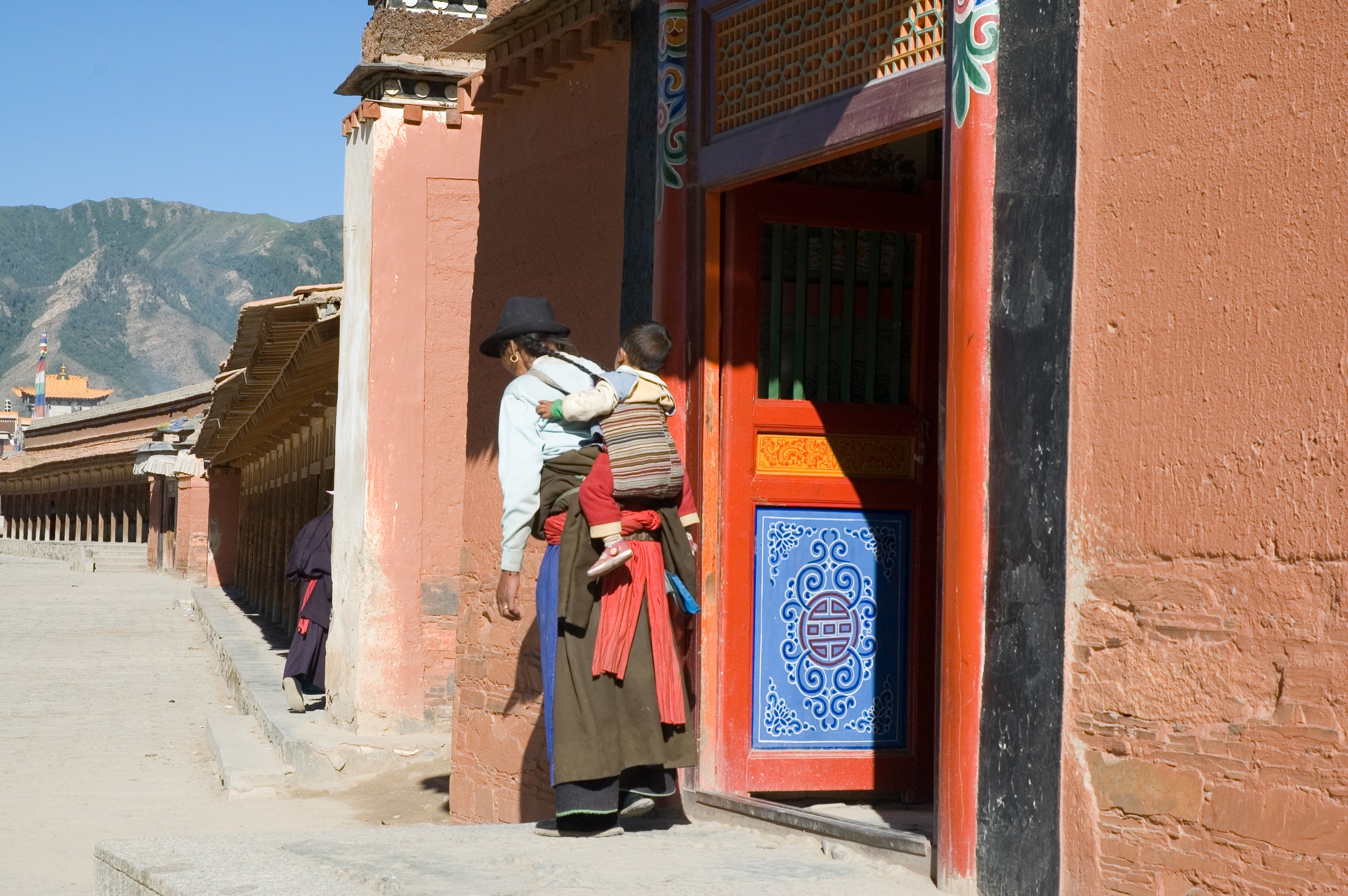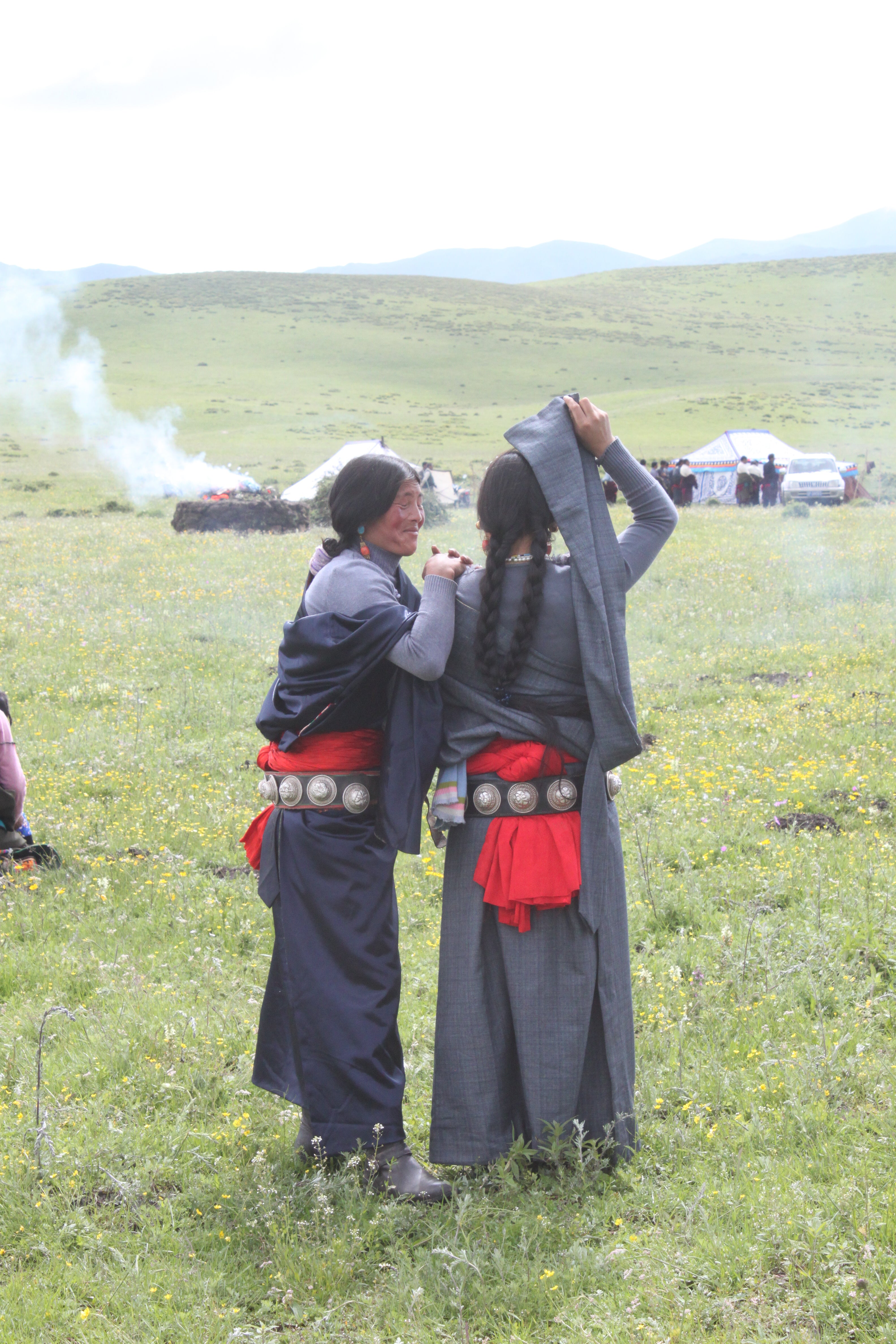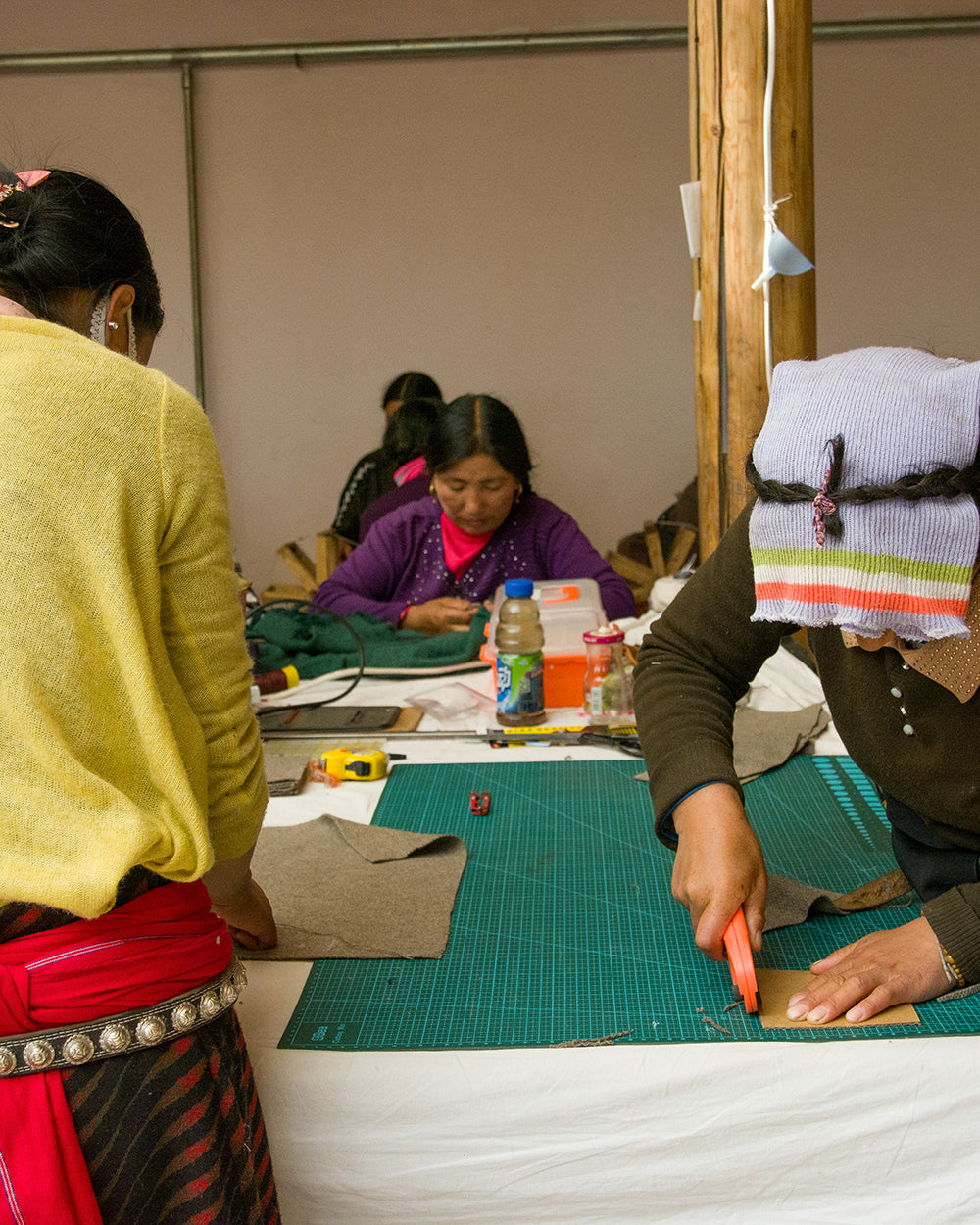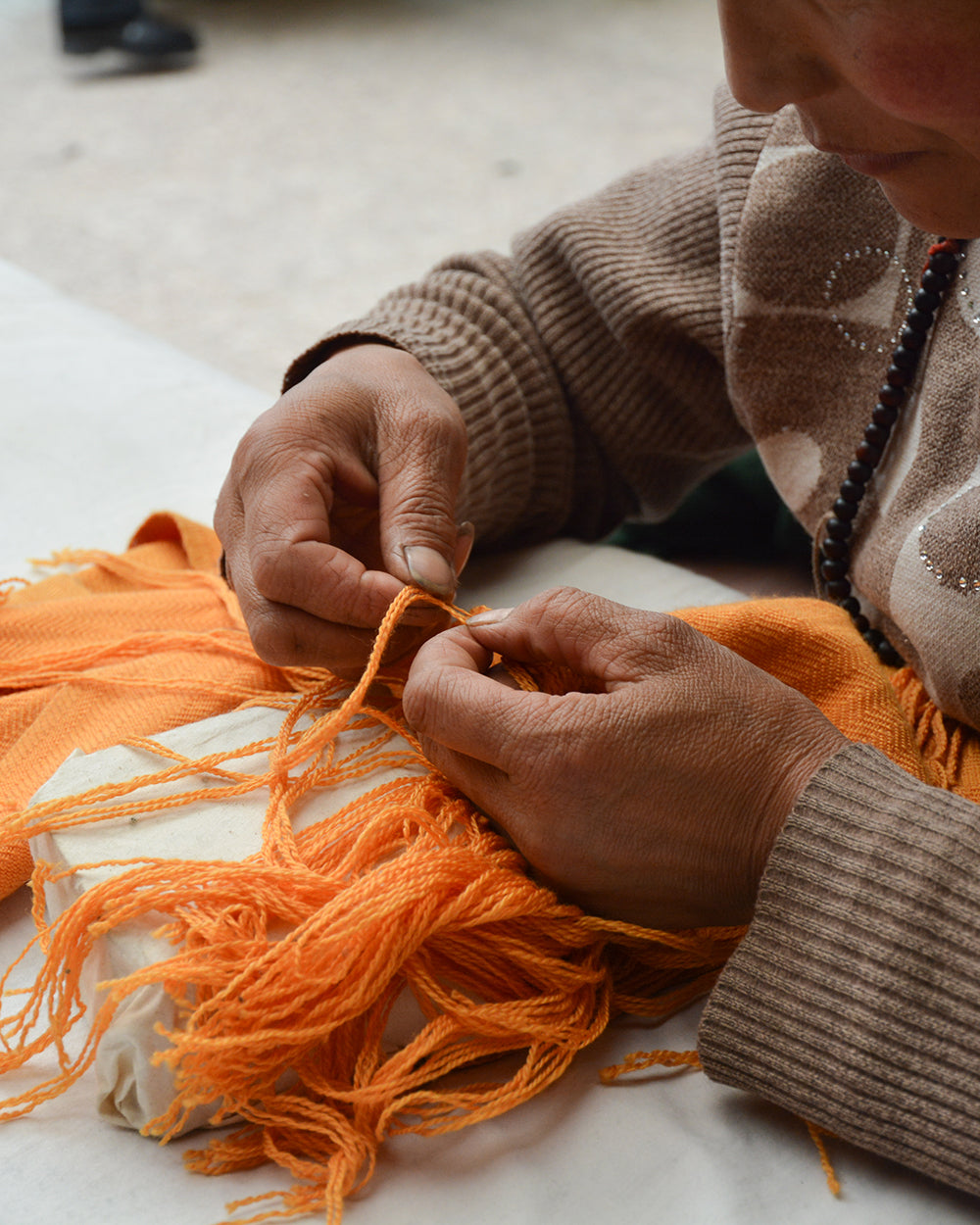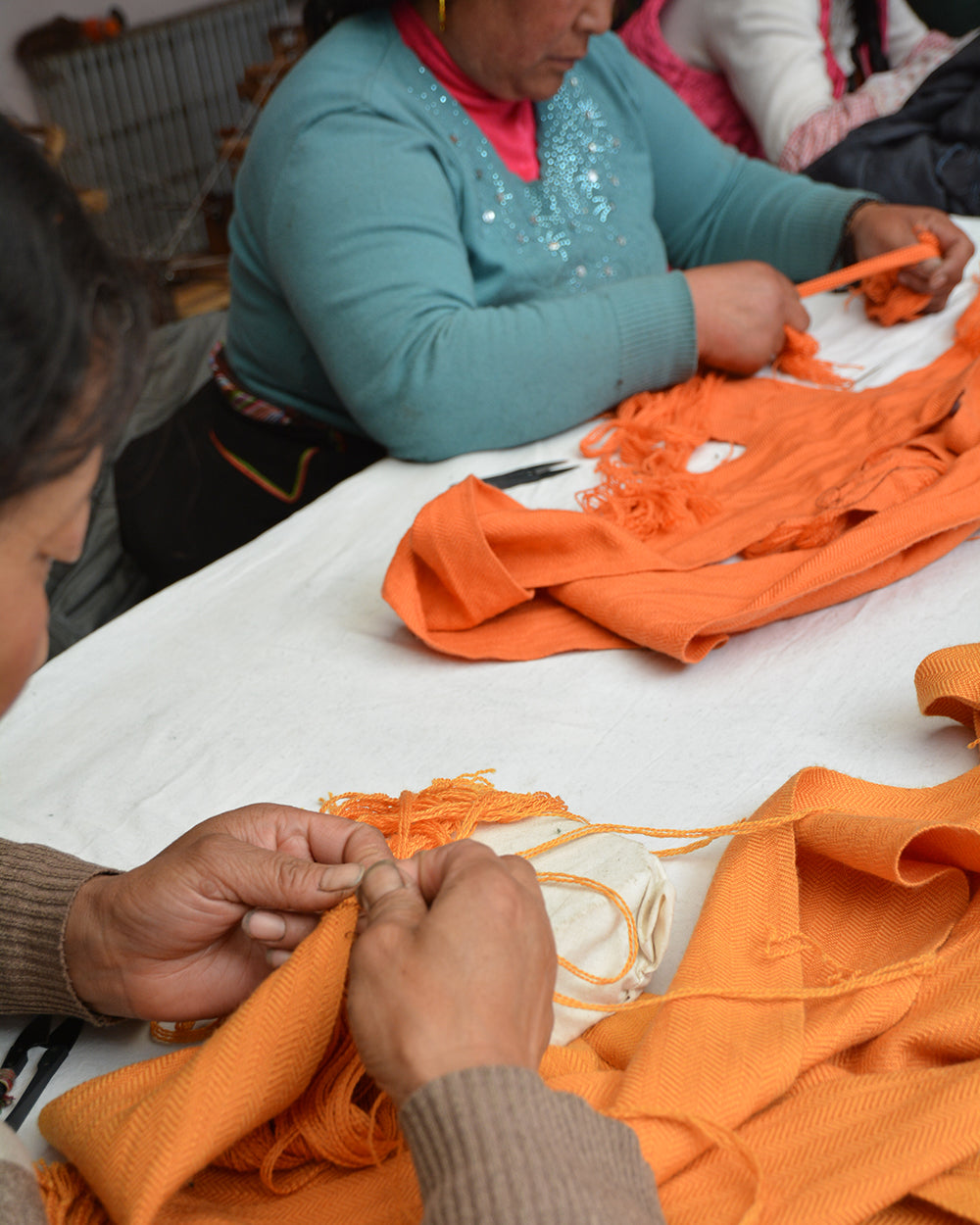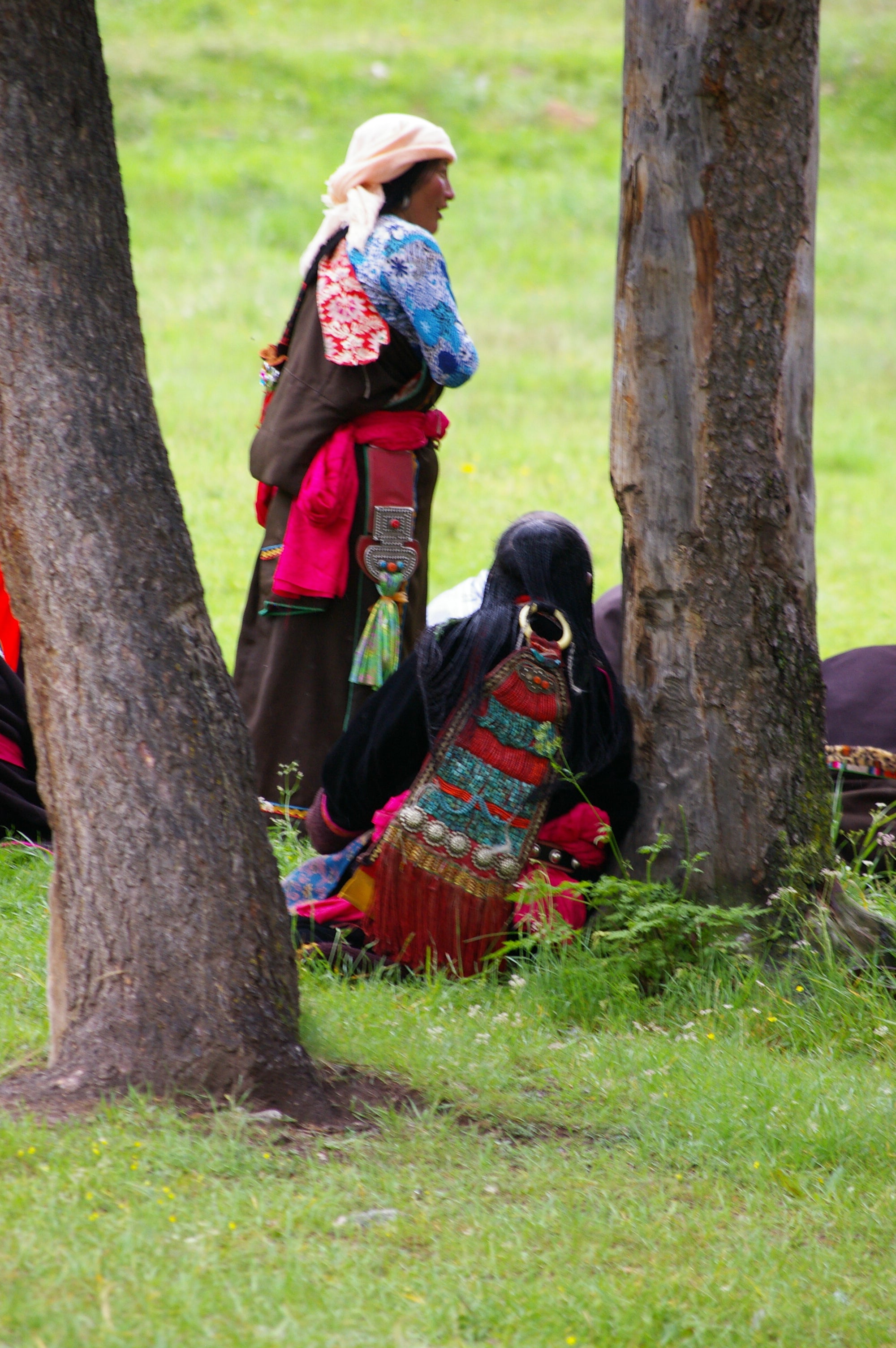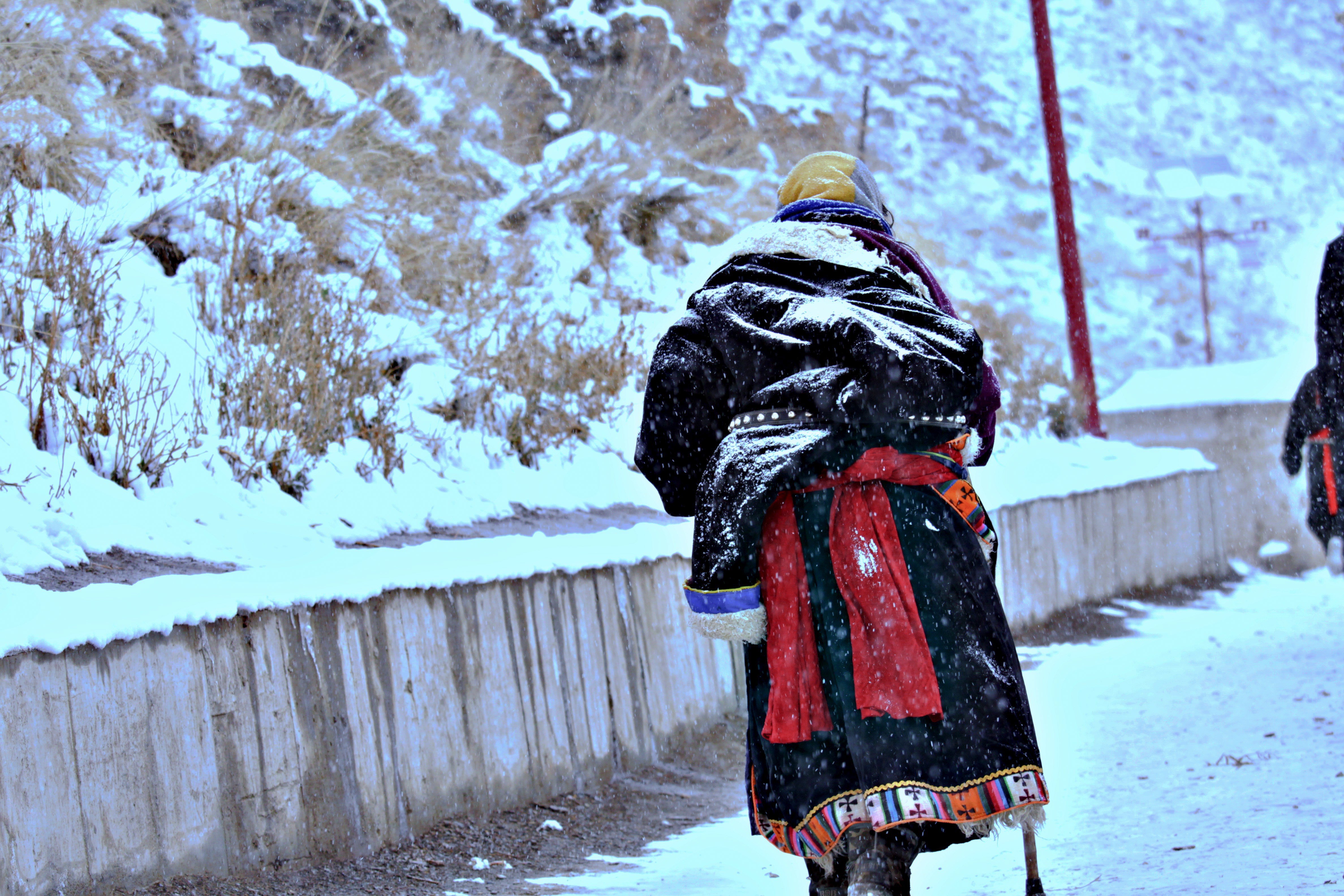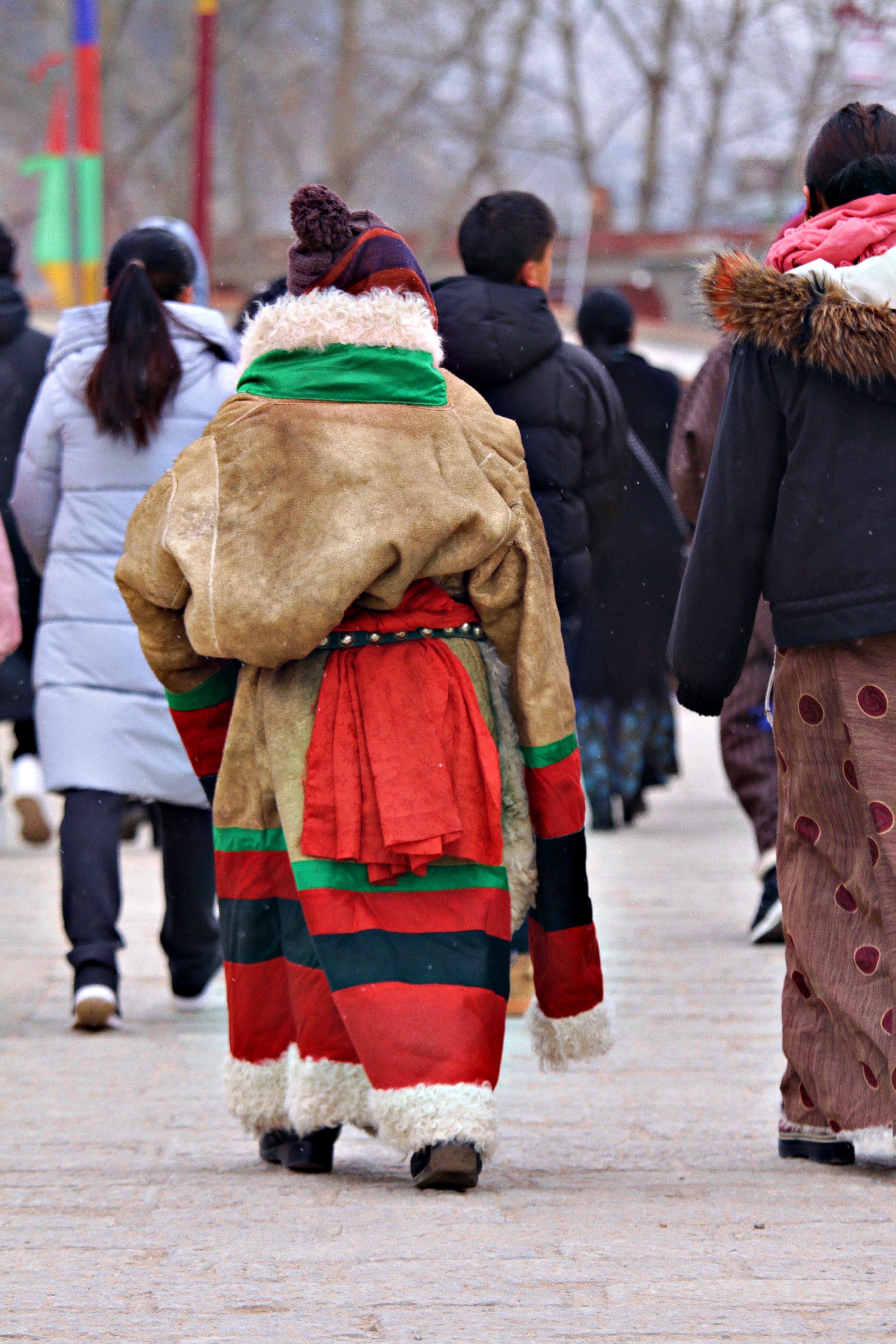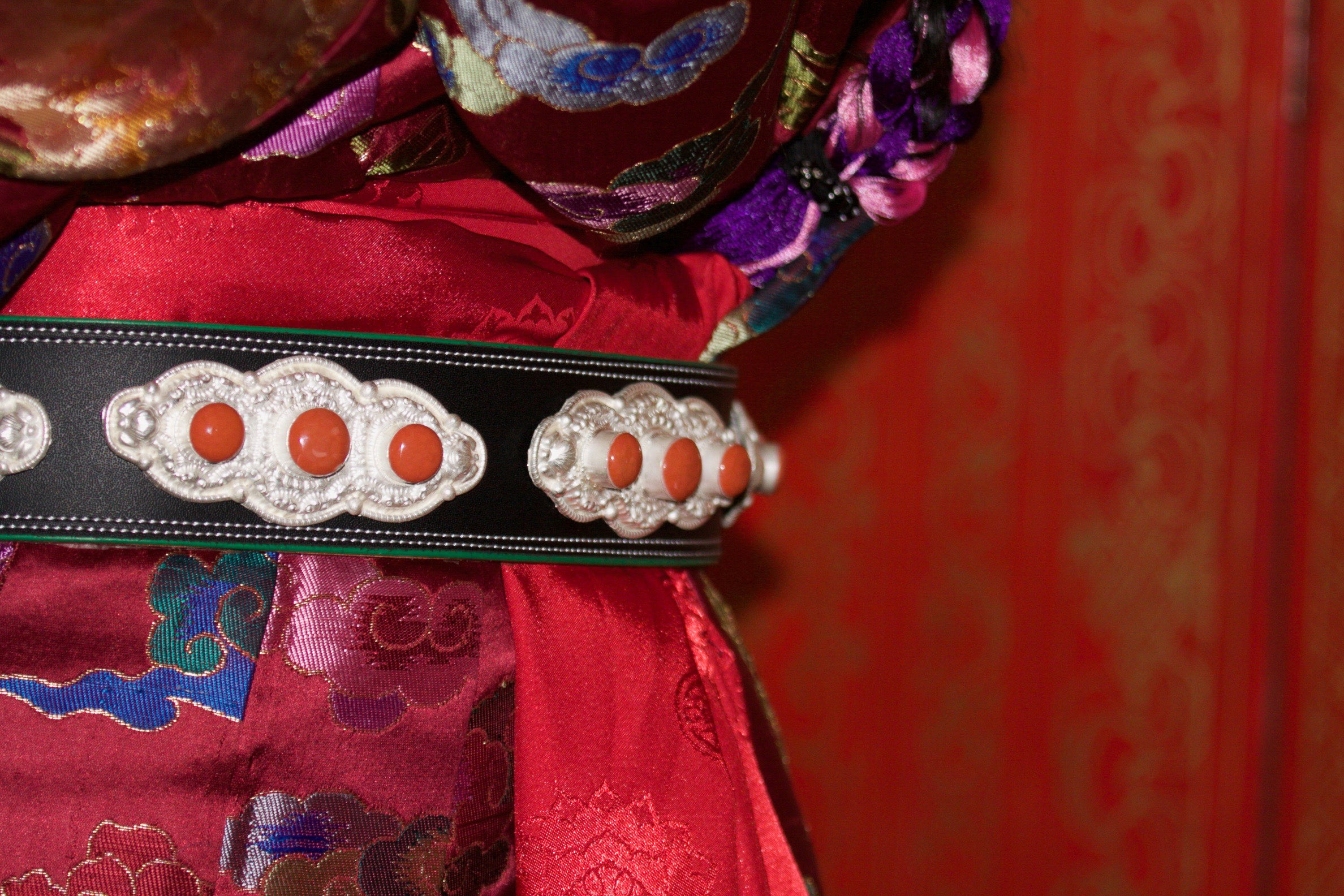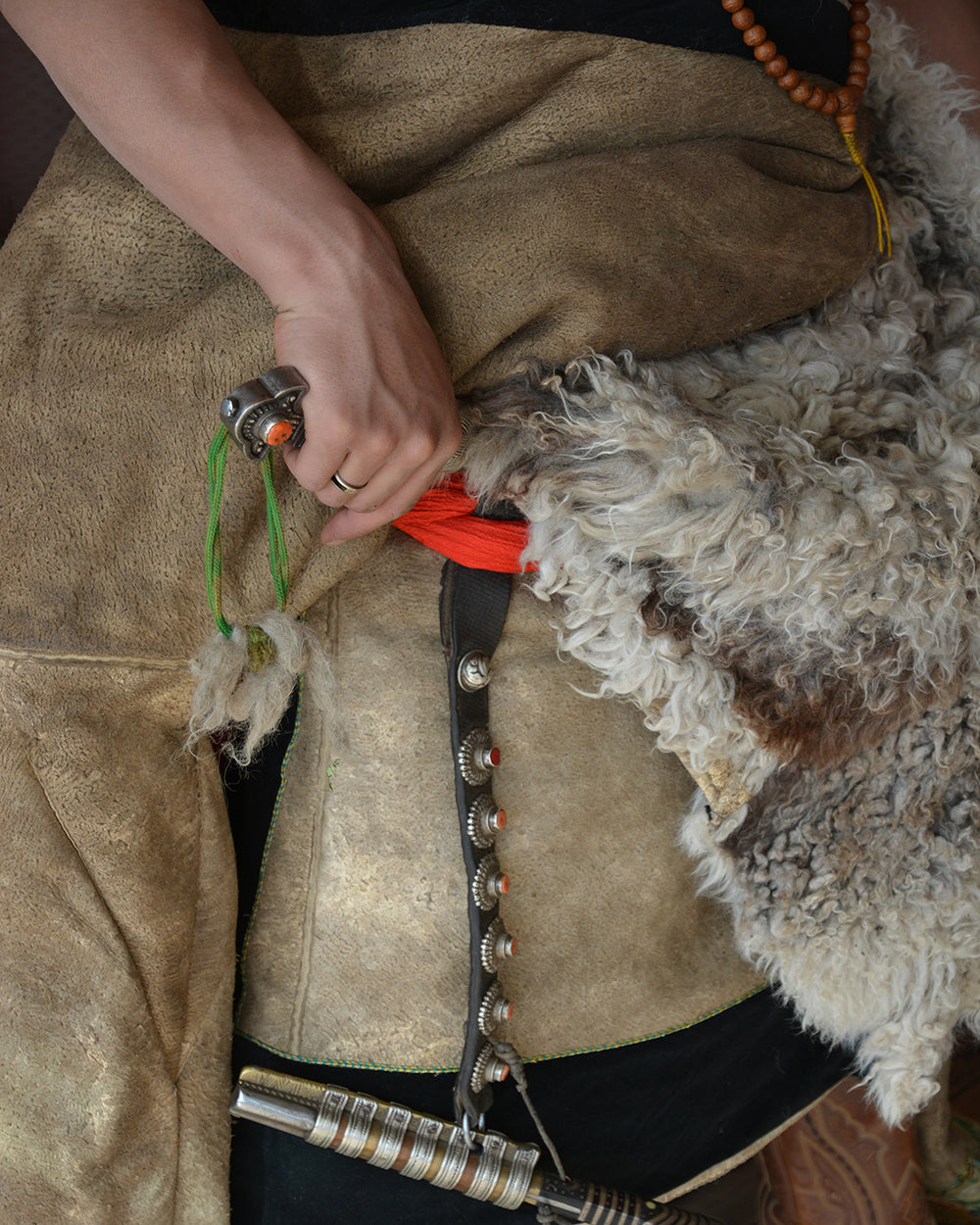SASHES AND BELTS
|
The Chuba, Tibet’s all weather, unisex robe has no buttons or fasteners and is styled through draping. A single sash does the trick, and man or woman, nomad, farmer or aristocrat, will style it accordingly. Material, sheepskin, woolen cloth or brocade also comes into play, each commanding its own version of chic. Sashes are usually made of silk, generous enough for several rounds of wrapping, which adds a certain, calculated, bulk and allows for the adjustment of the back pleats that command the length or the garment and the volume of the front pouch. Most sashes have long tassels which add to the look, from the back. Belts are an additional option, and are especially popular in nomadic areas; men will tuck swords and knives into them, and hang their flint stones. Women will use them to support milking hooks, or other practical objects, which over time, have become ornamental. These include elaborate silver objects of various shapes set with corals and turquoise. In the old days, aristocrats hung little pouches on their belt that contained a small carving knife for eating meat, a wooden bowl and a pair of chopsticks, which in spite of the precious brocades their robes were made of, still implied a life on the move. Monk’s garb is also devoid of fasteners and all garments are wrapped, the lower secured by a sash sash, red or orange in color, woven from wool. |

